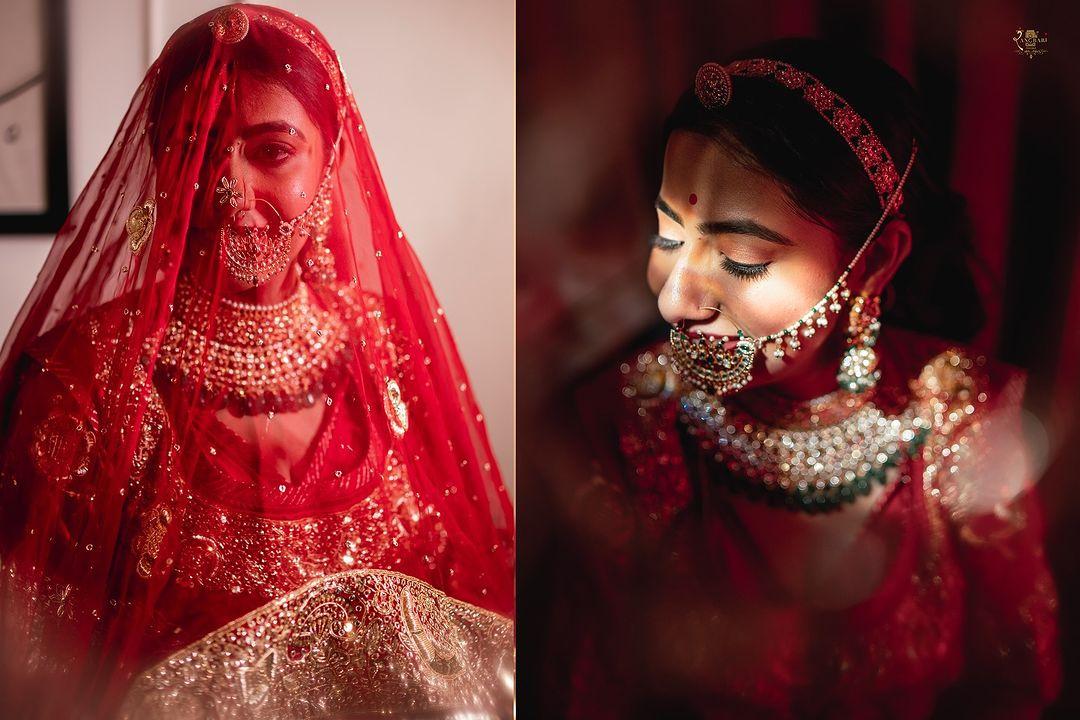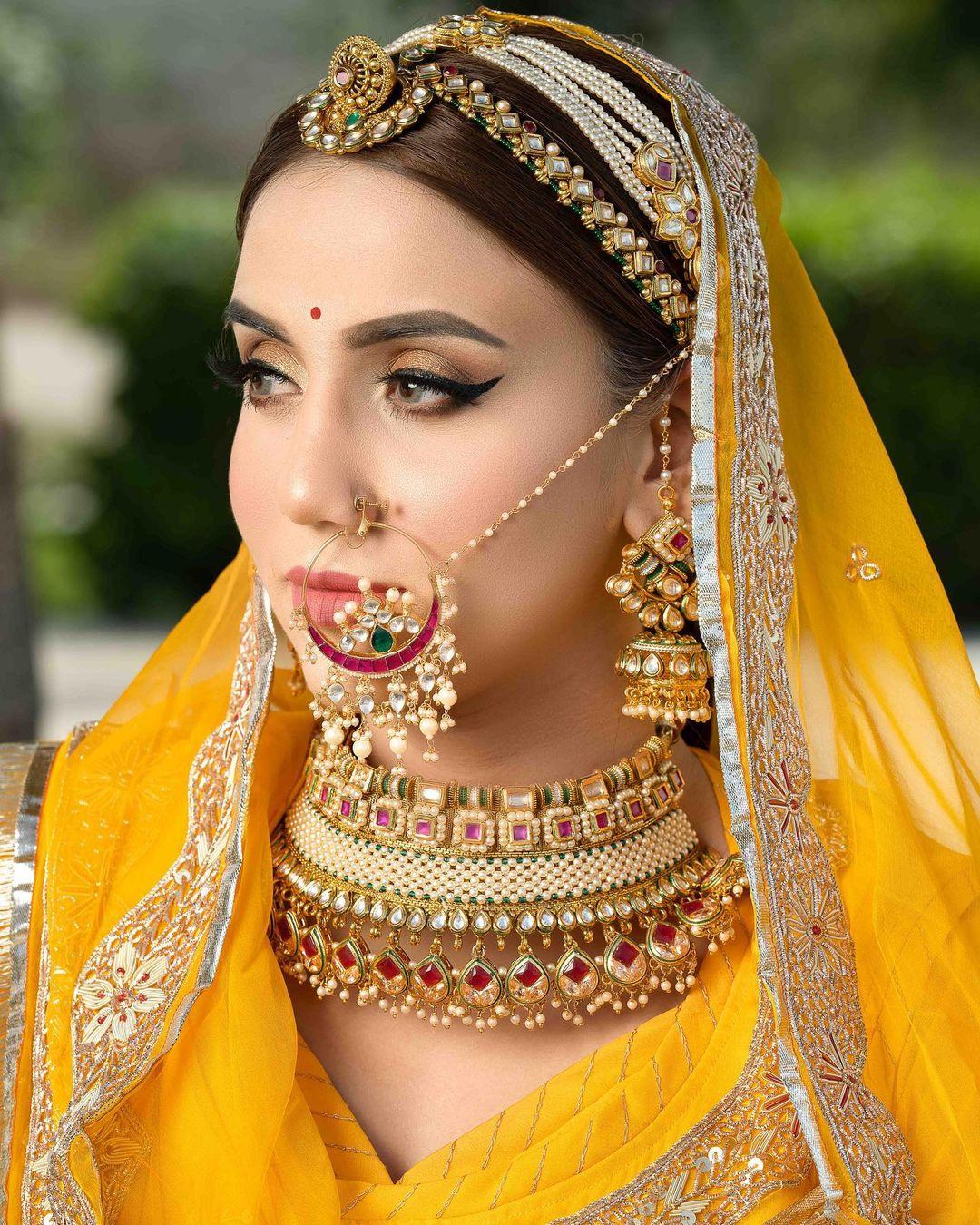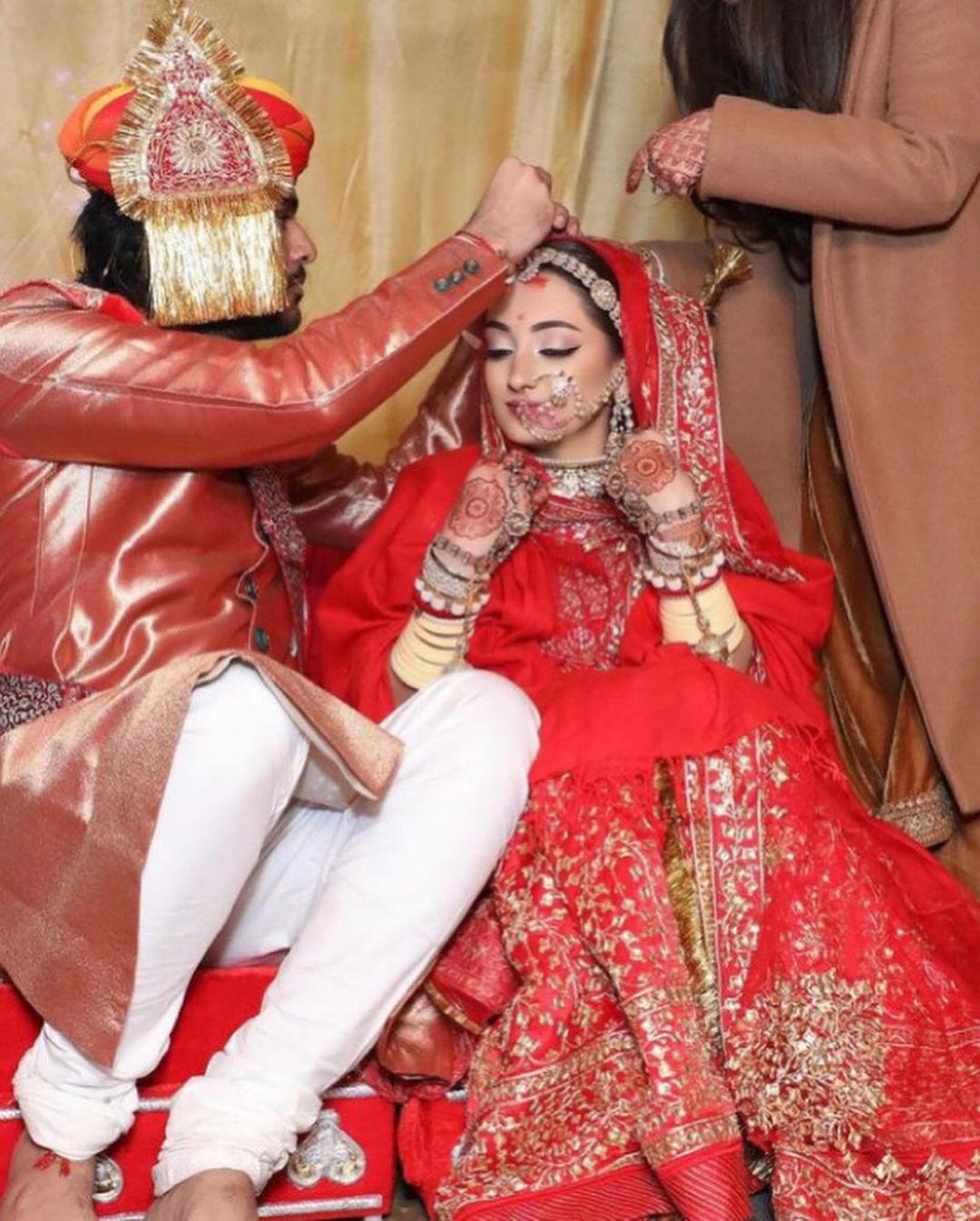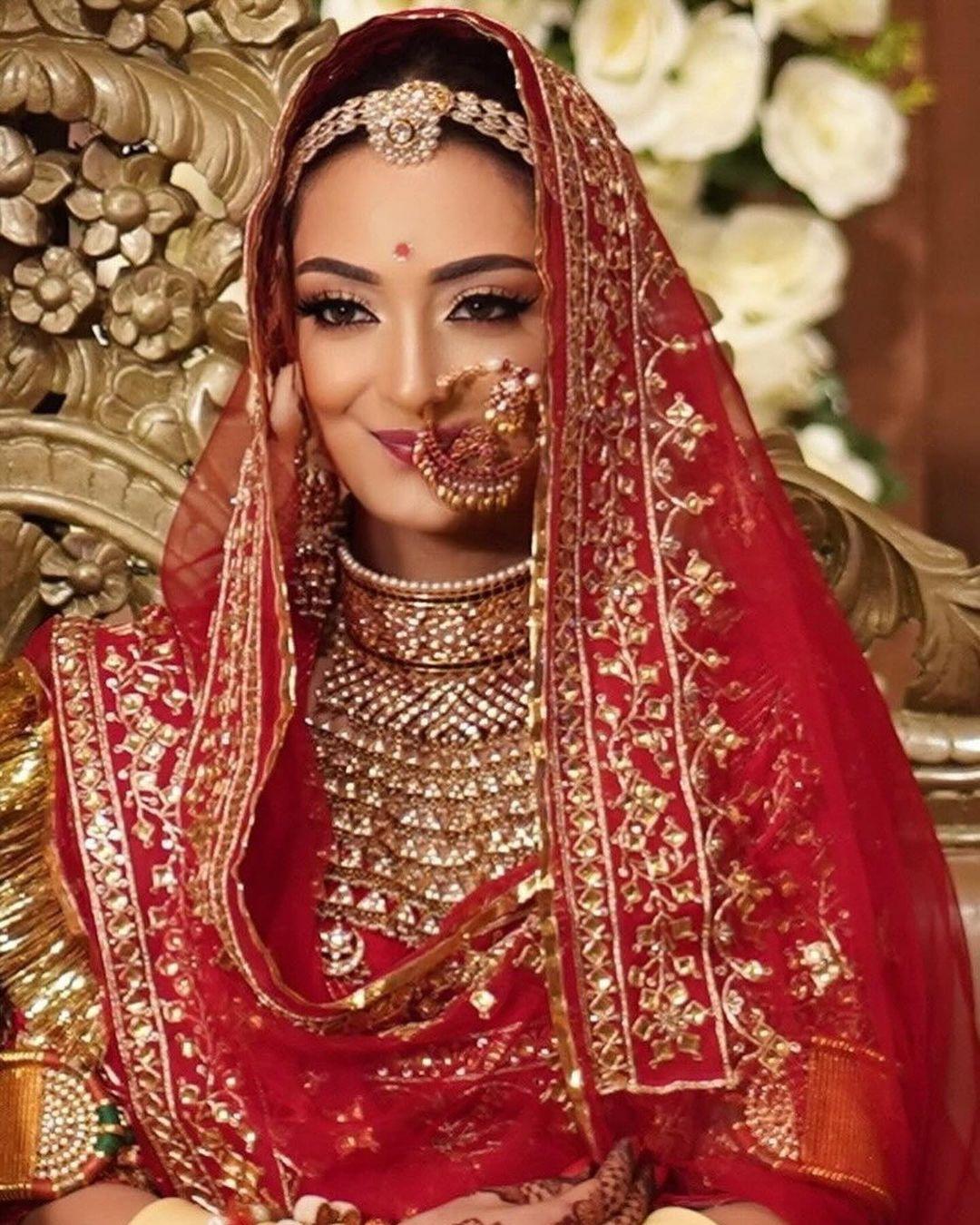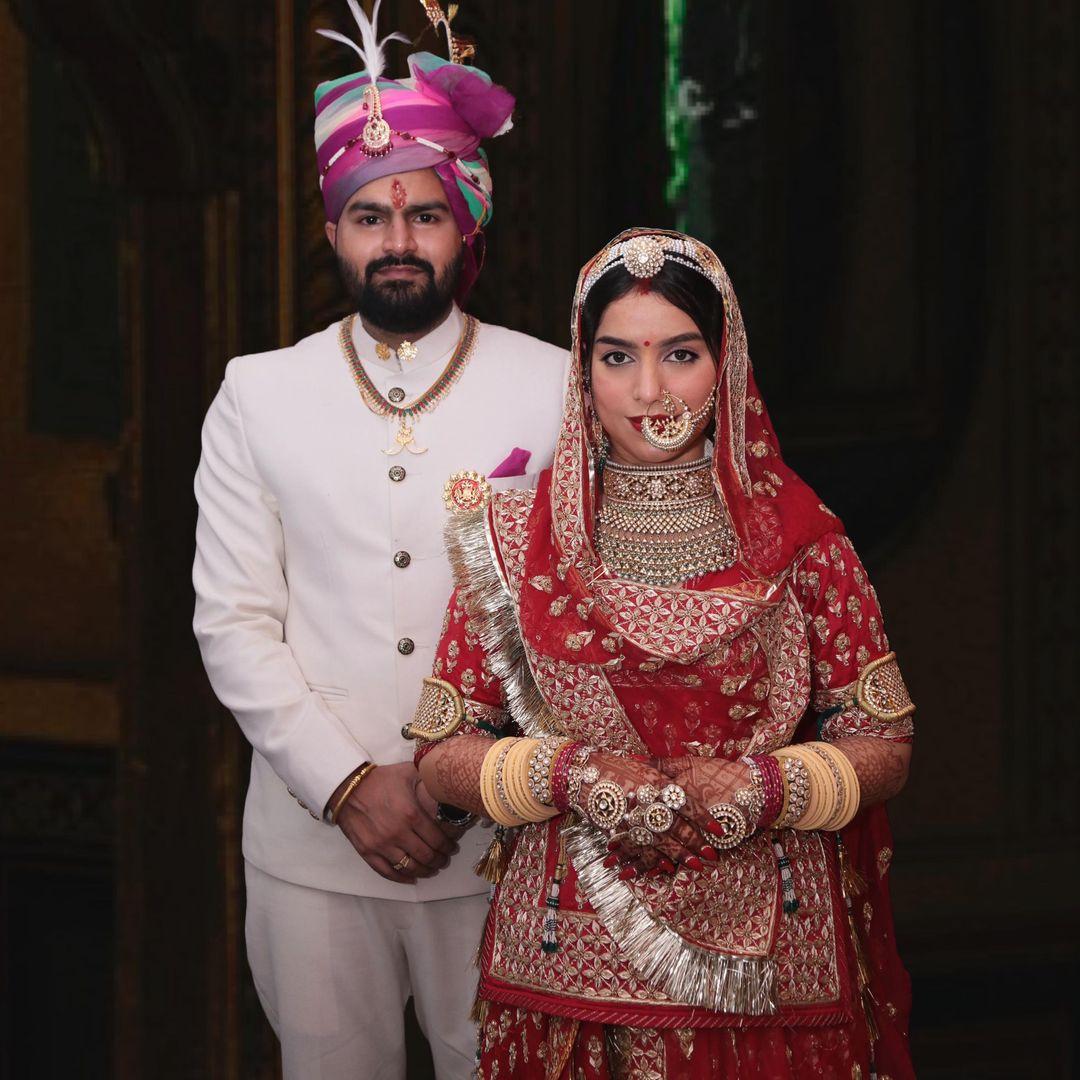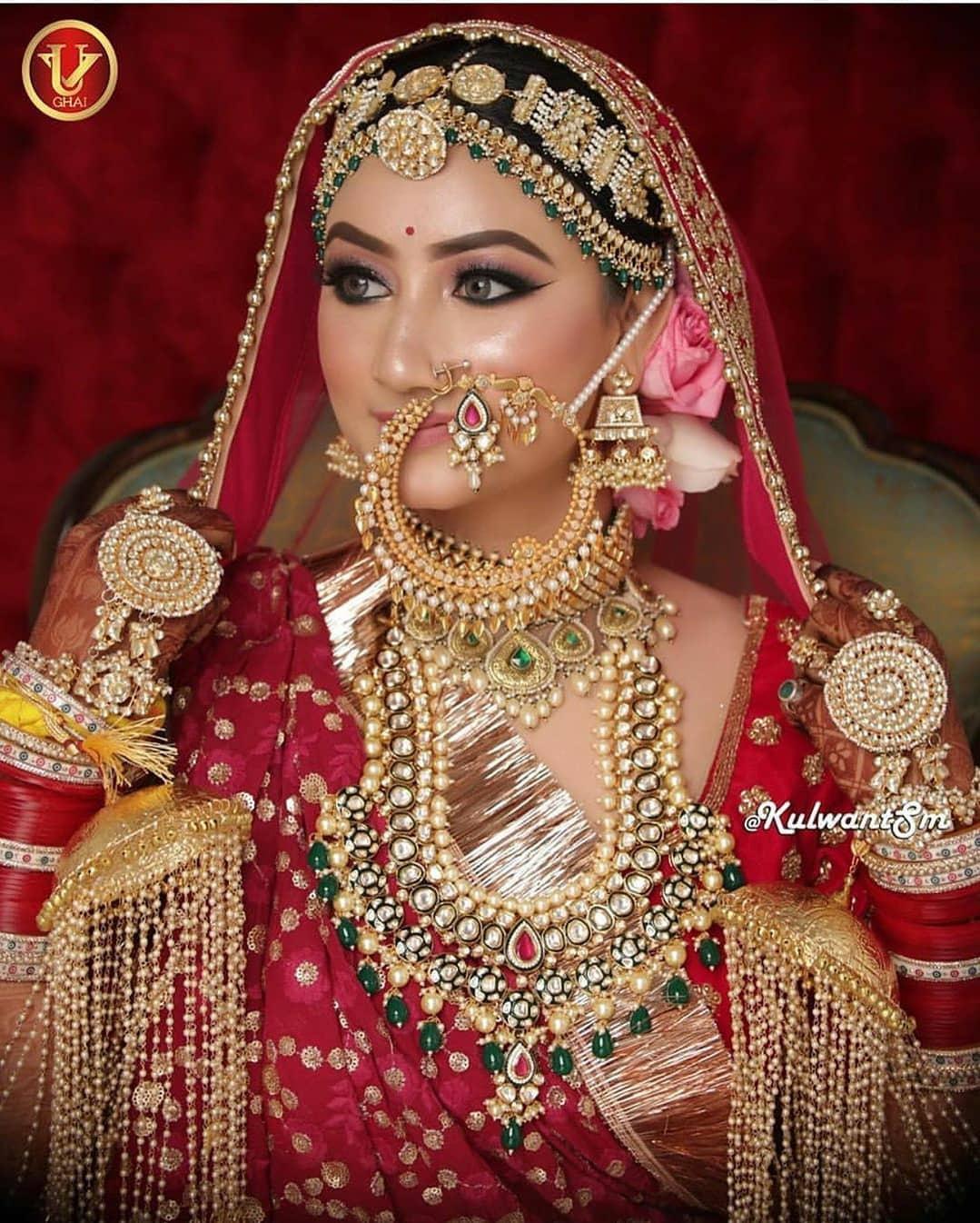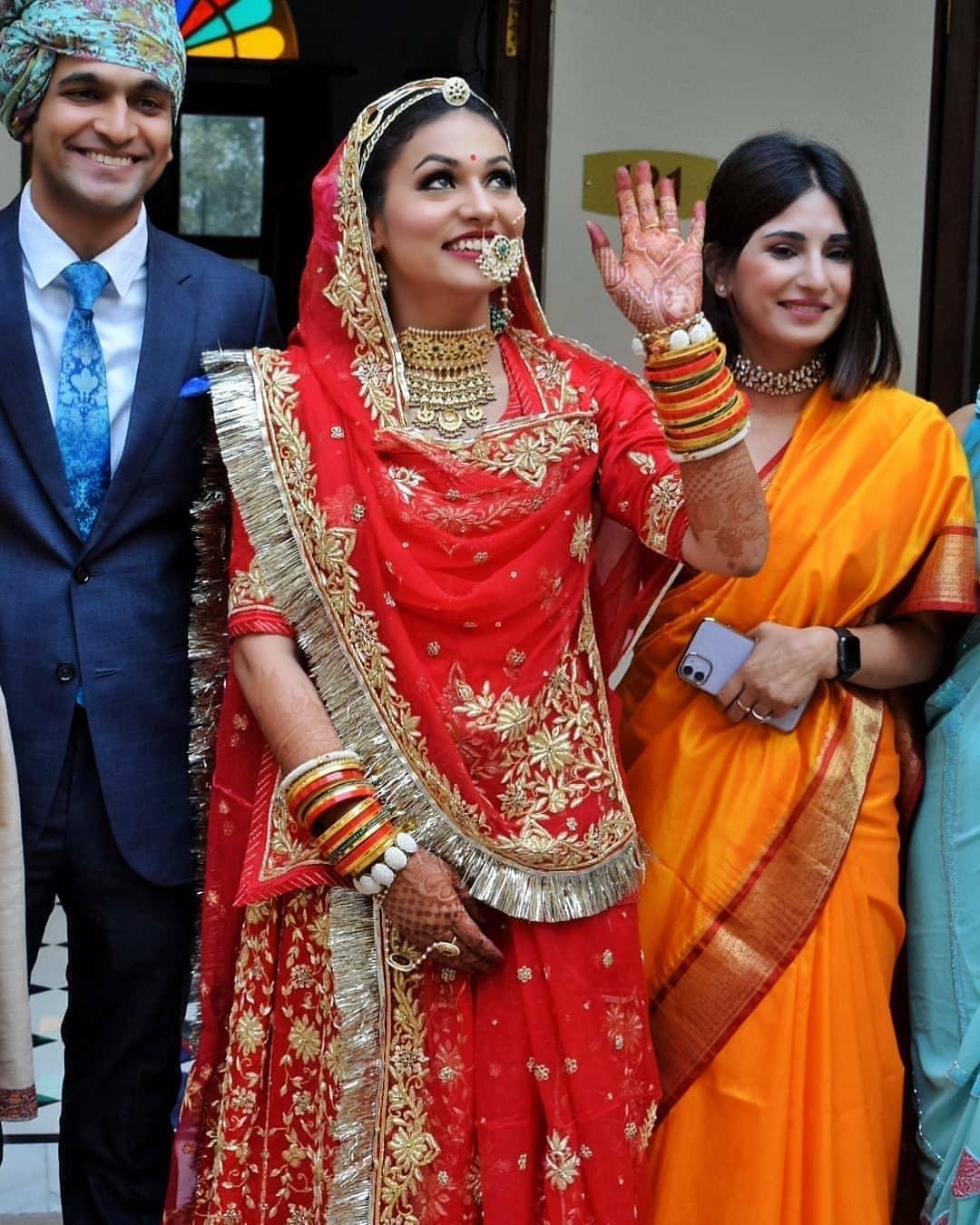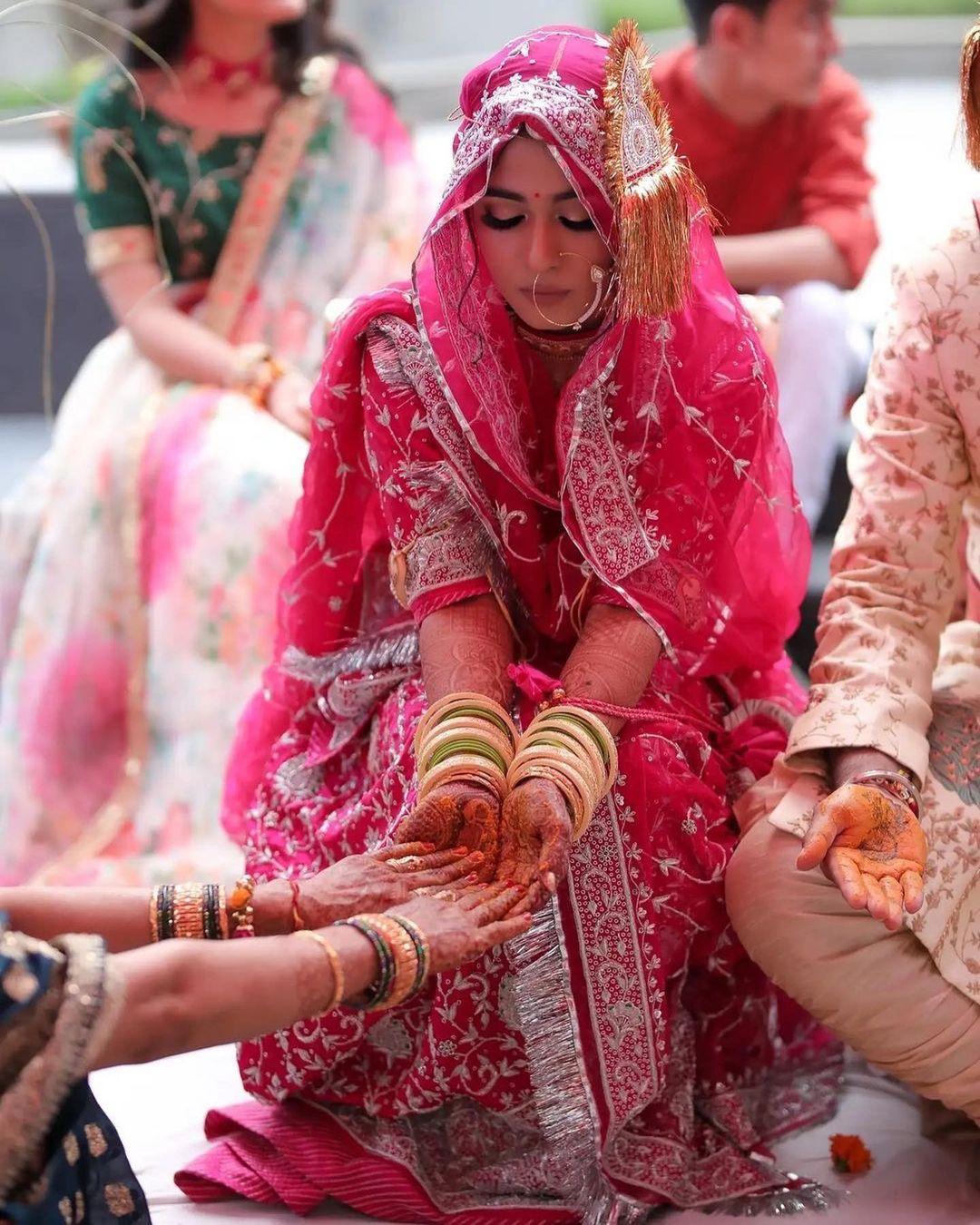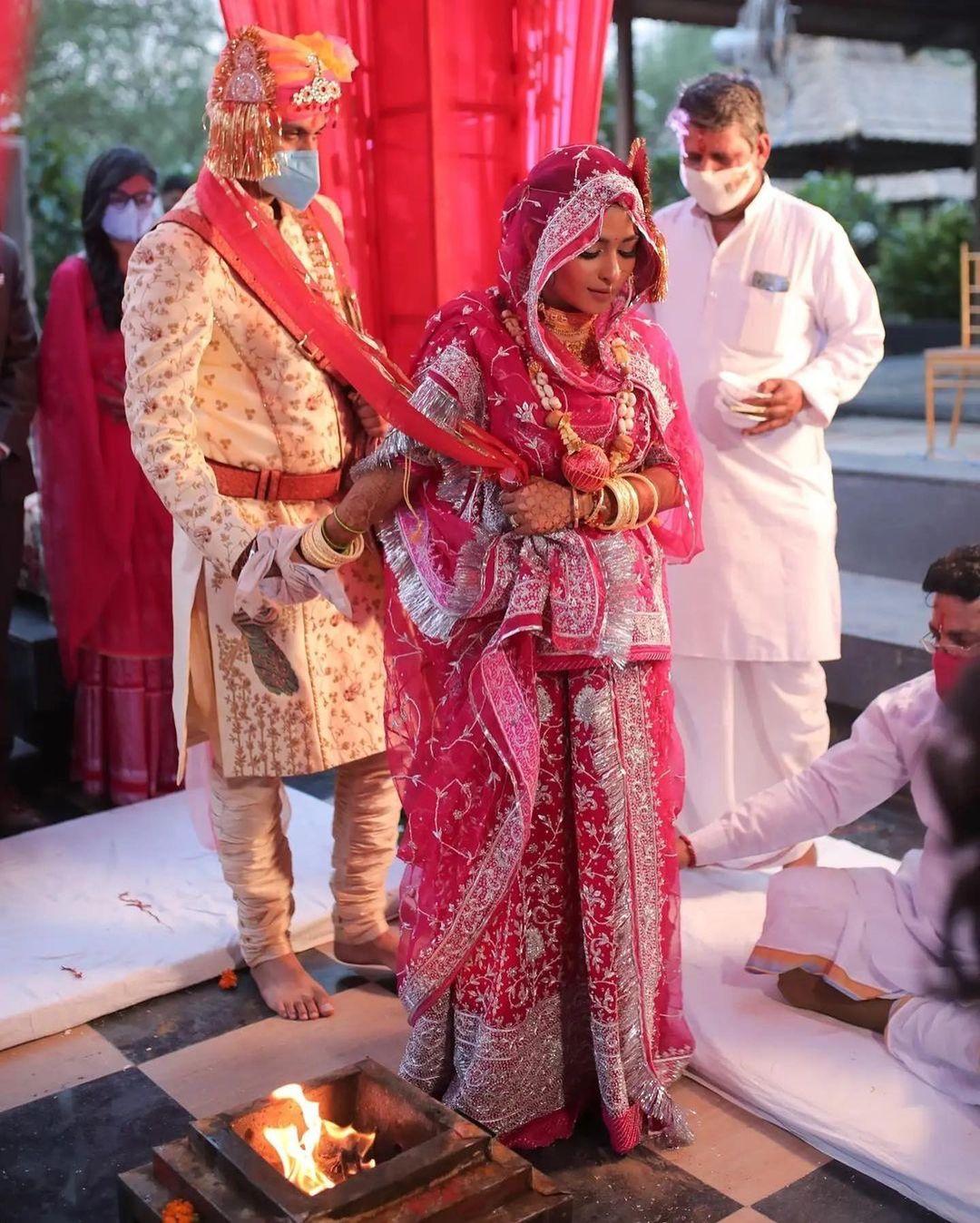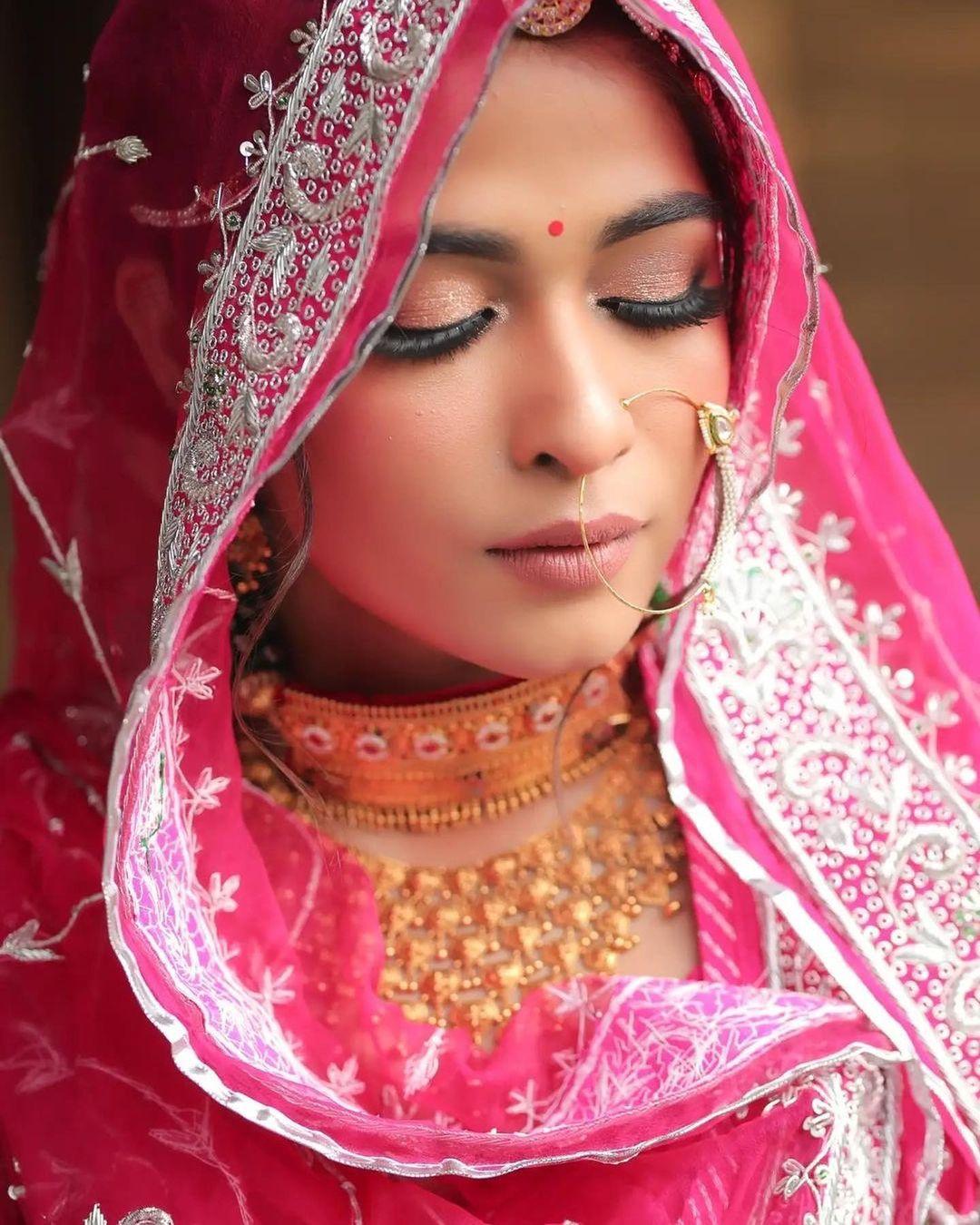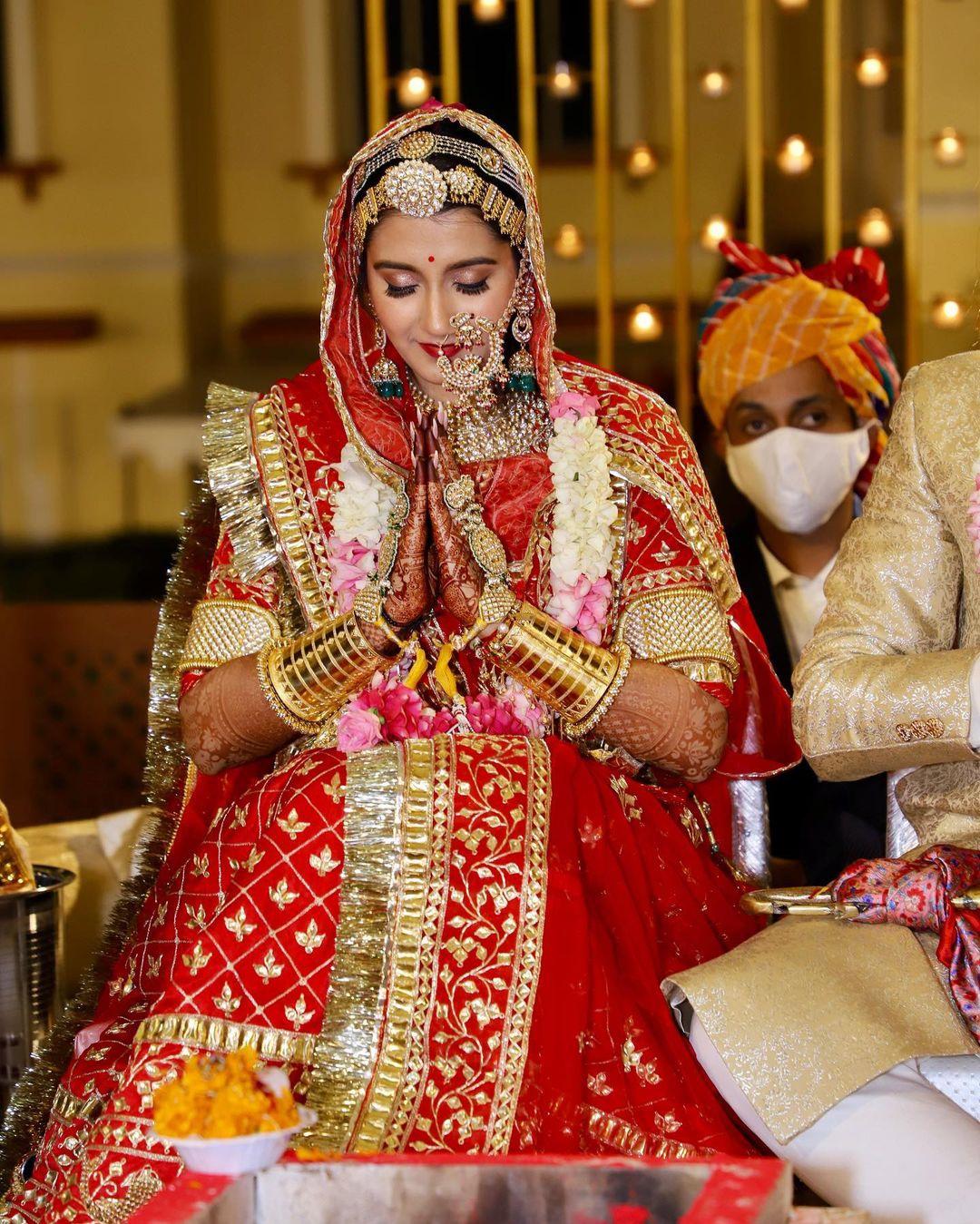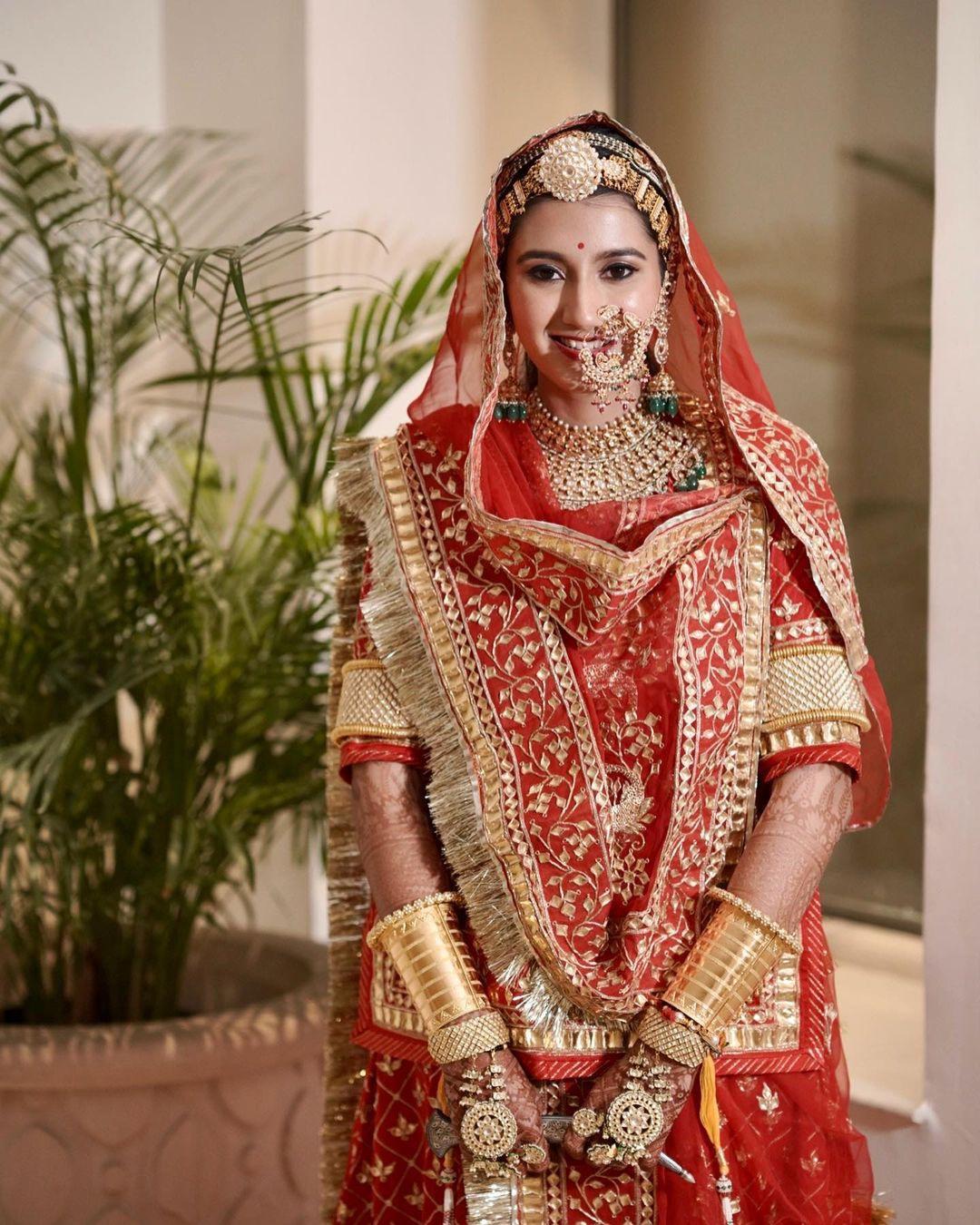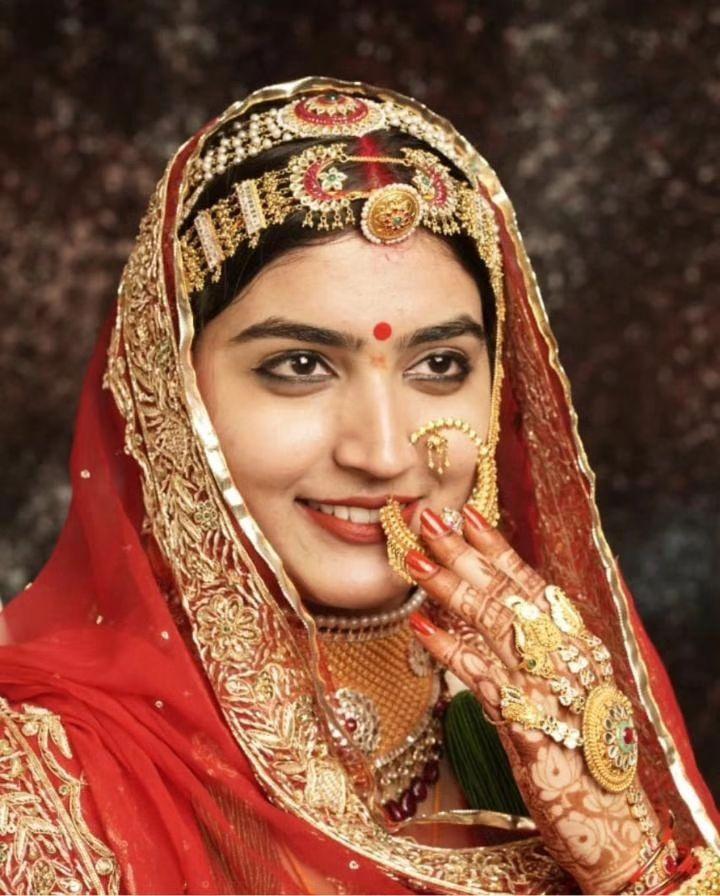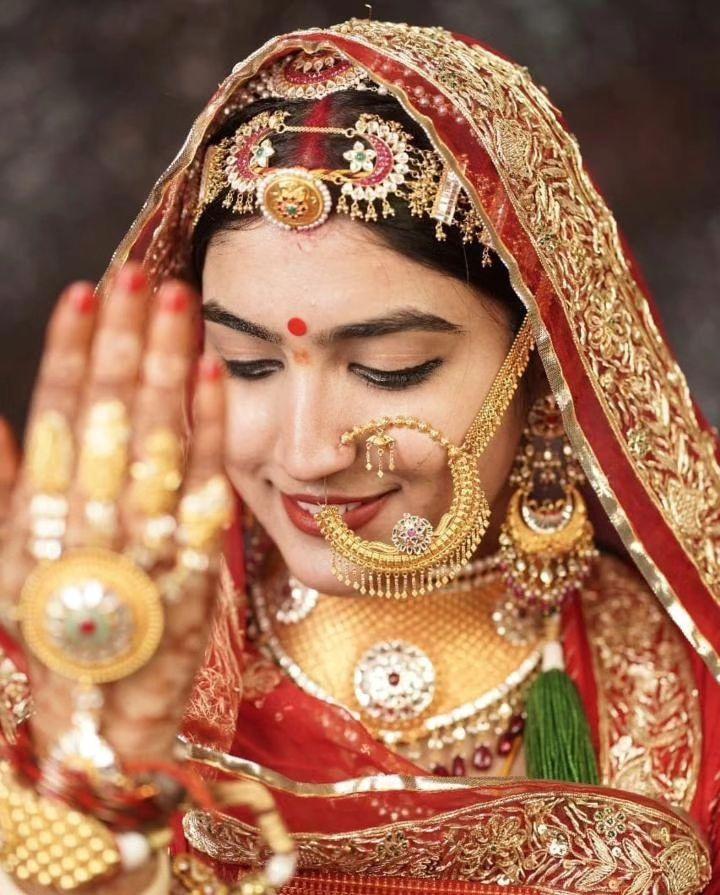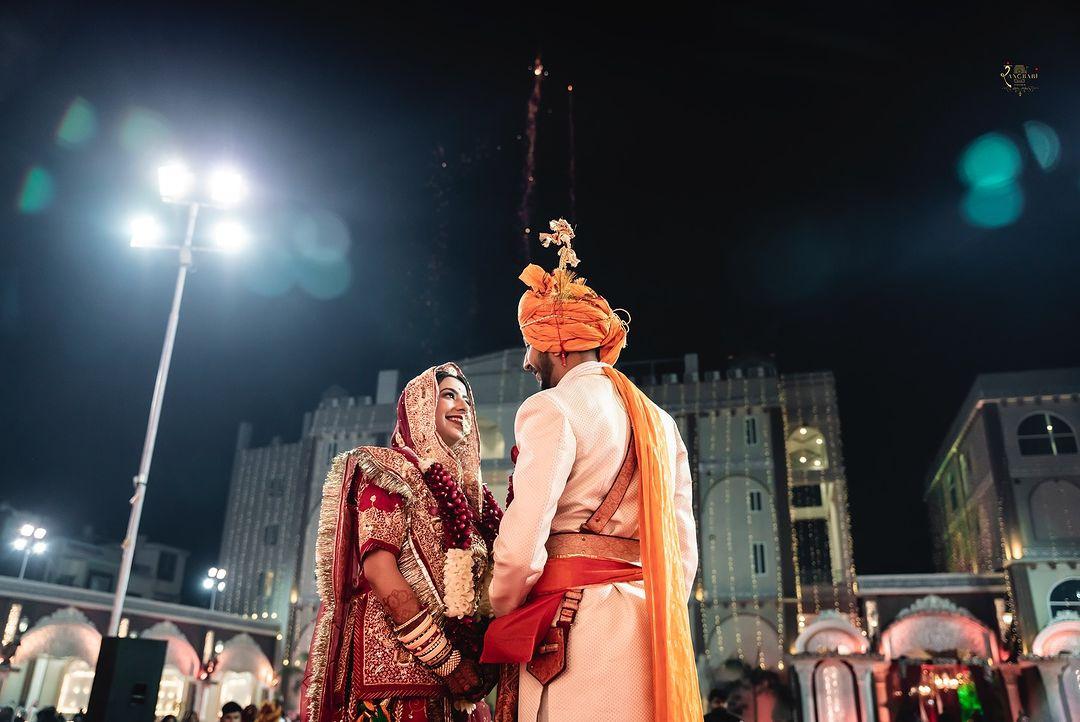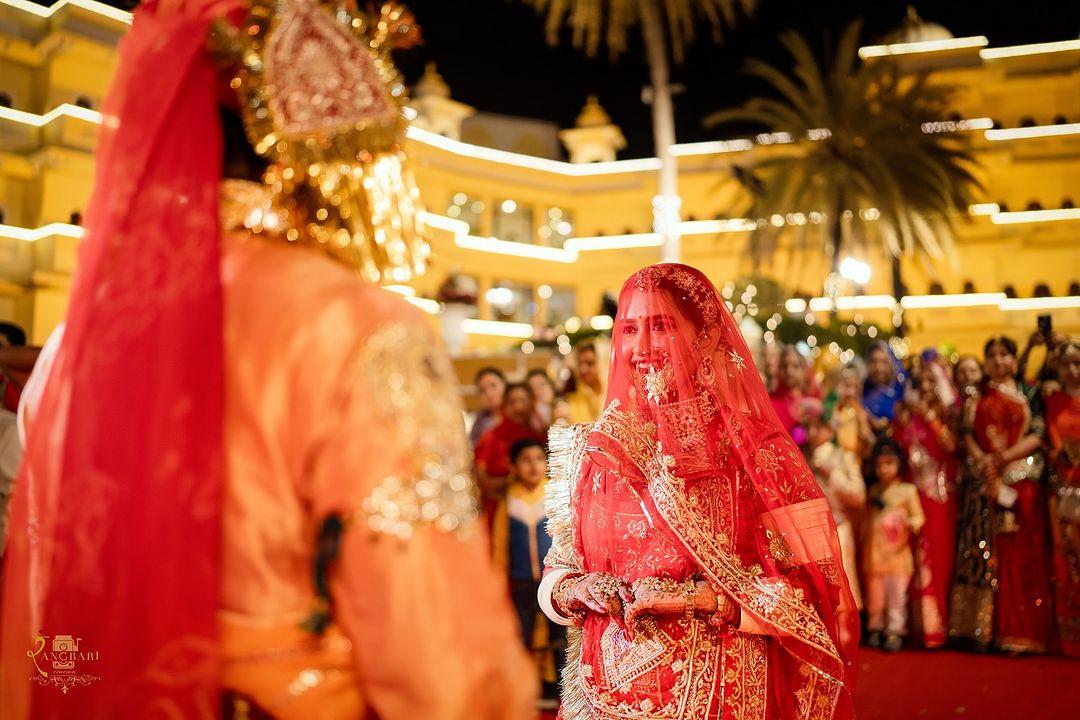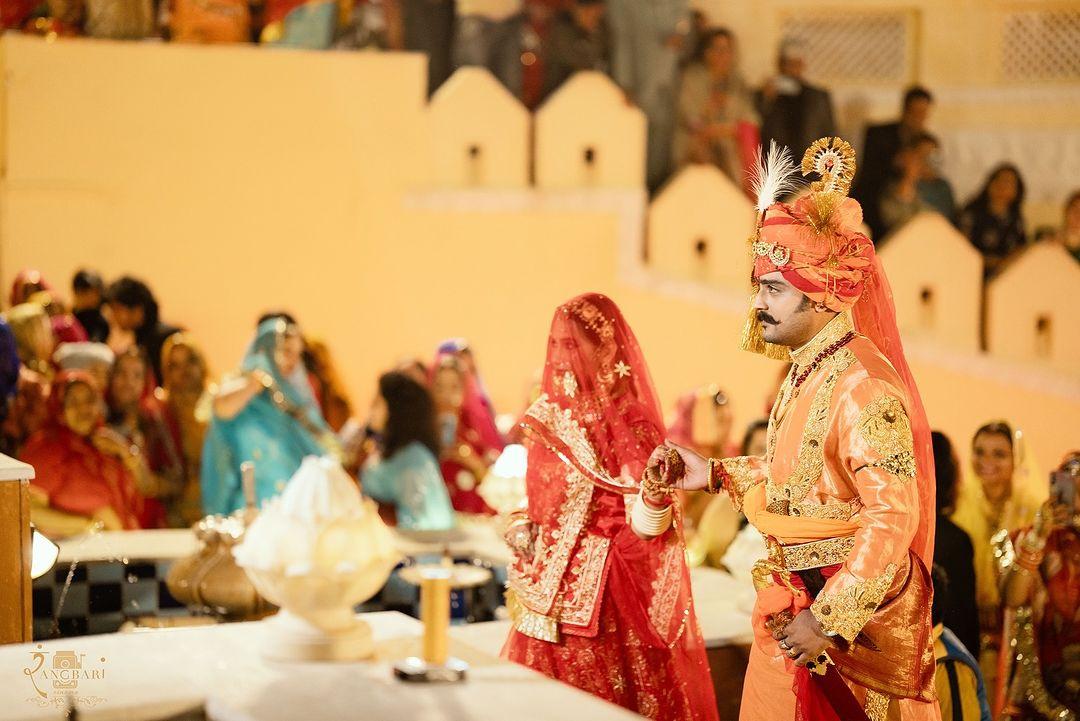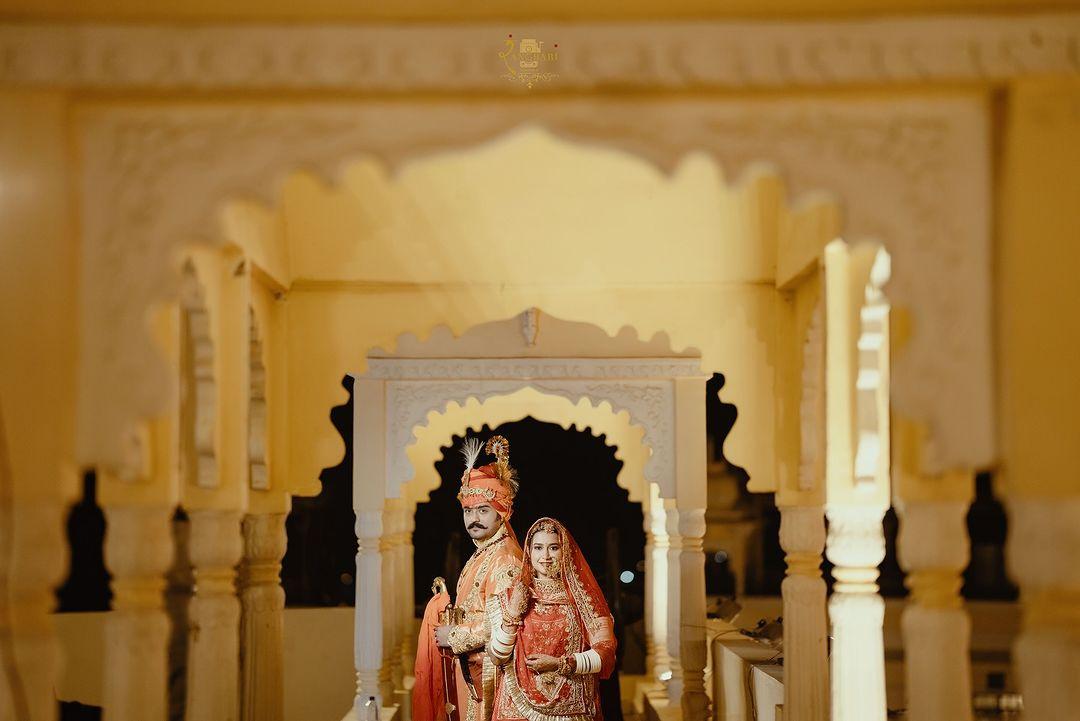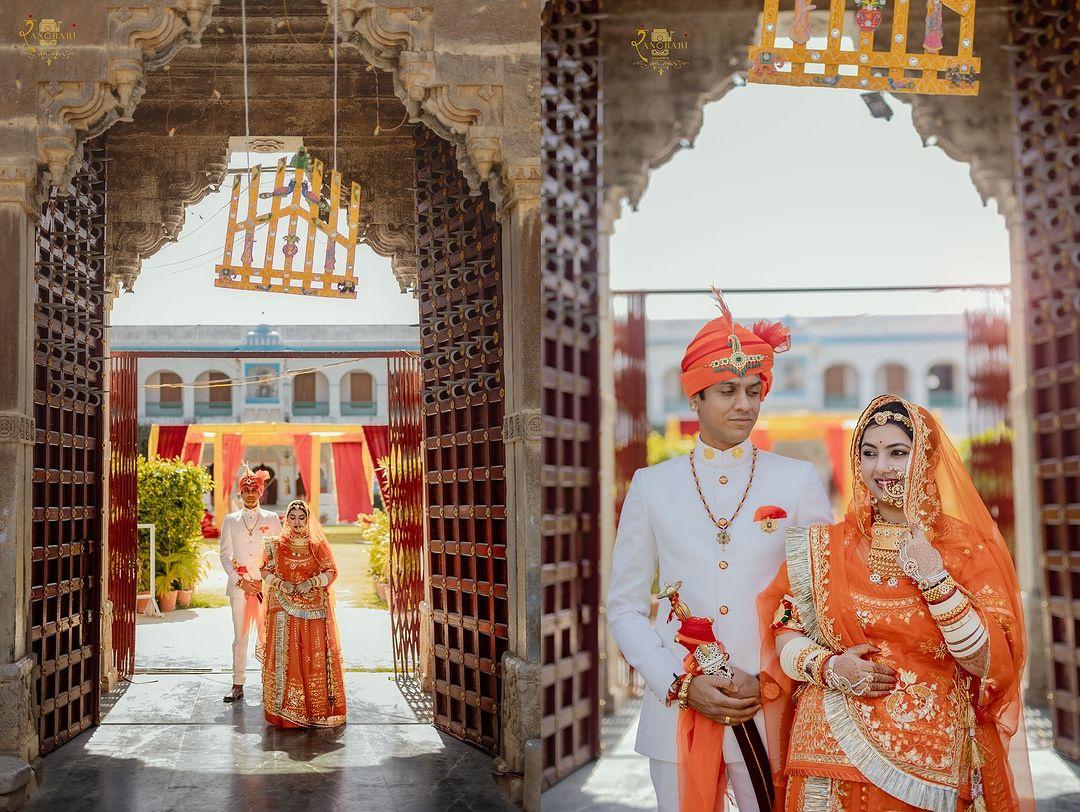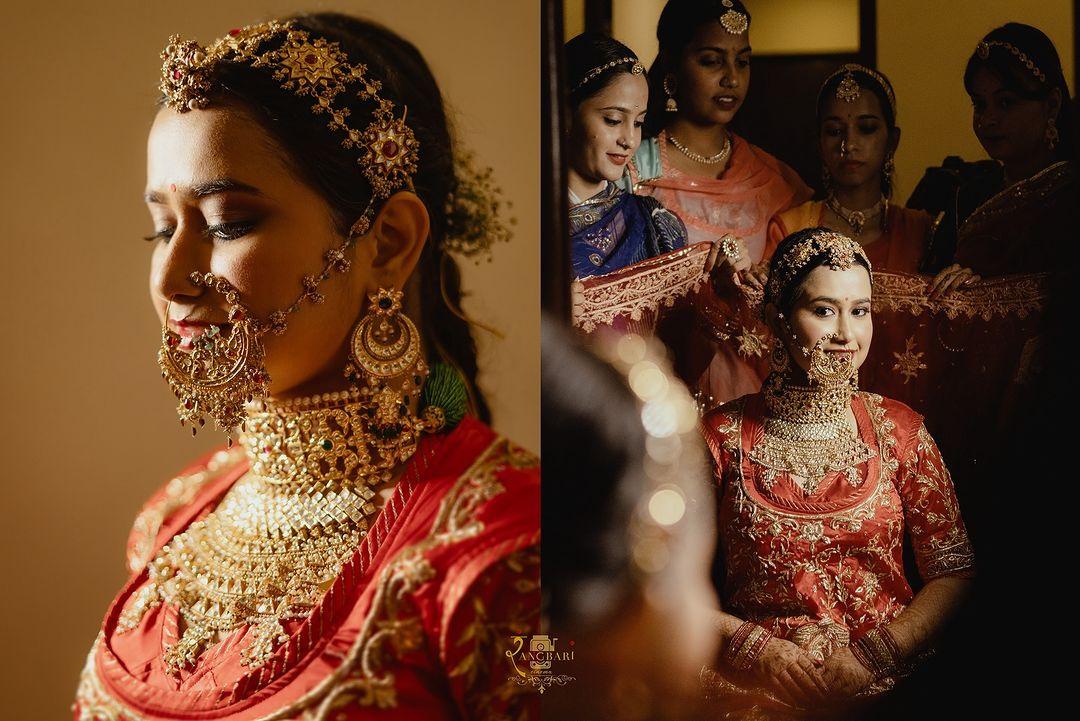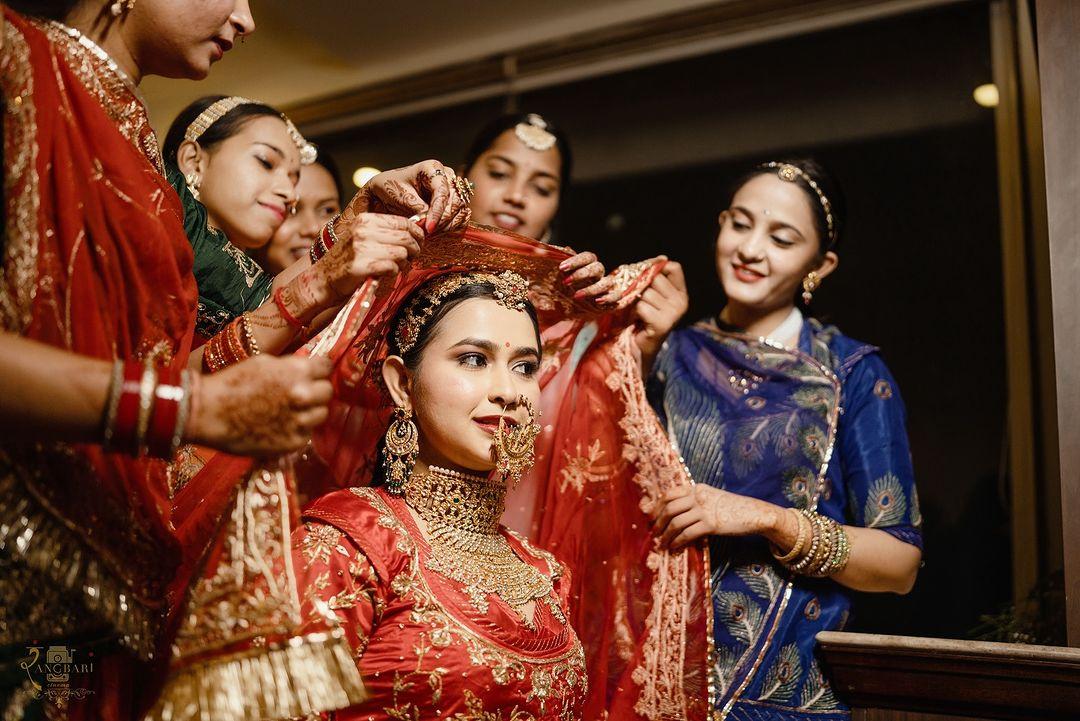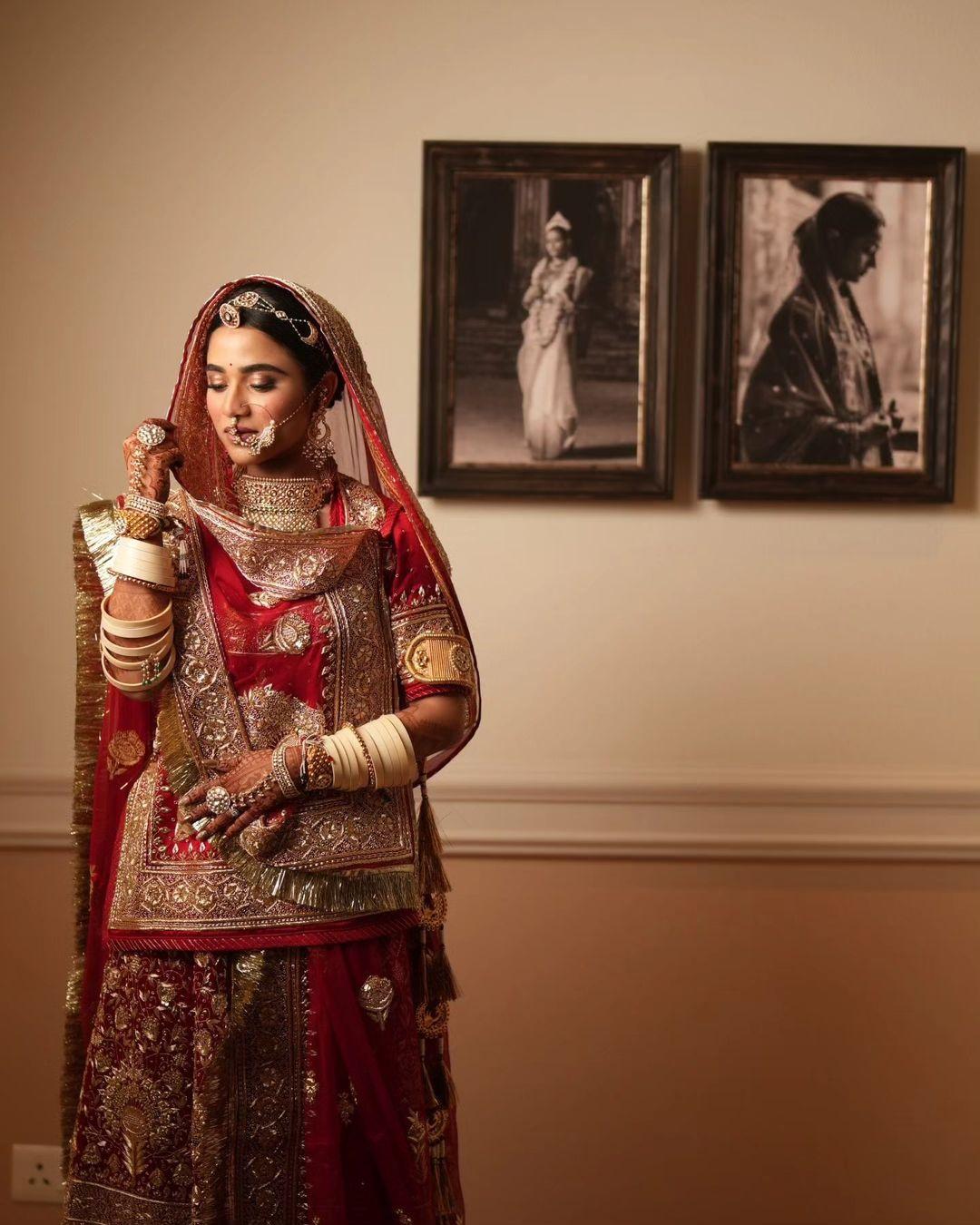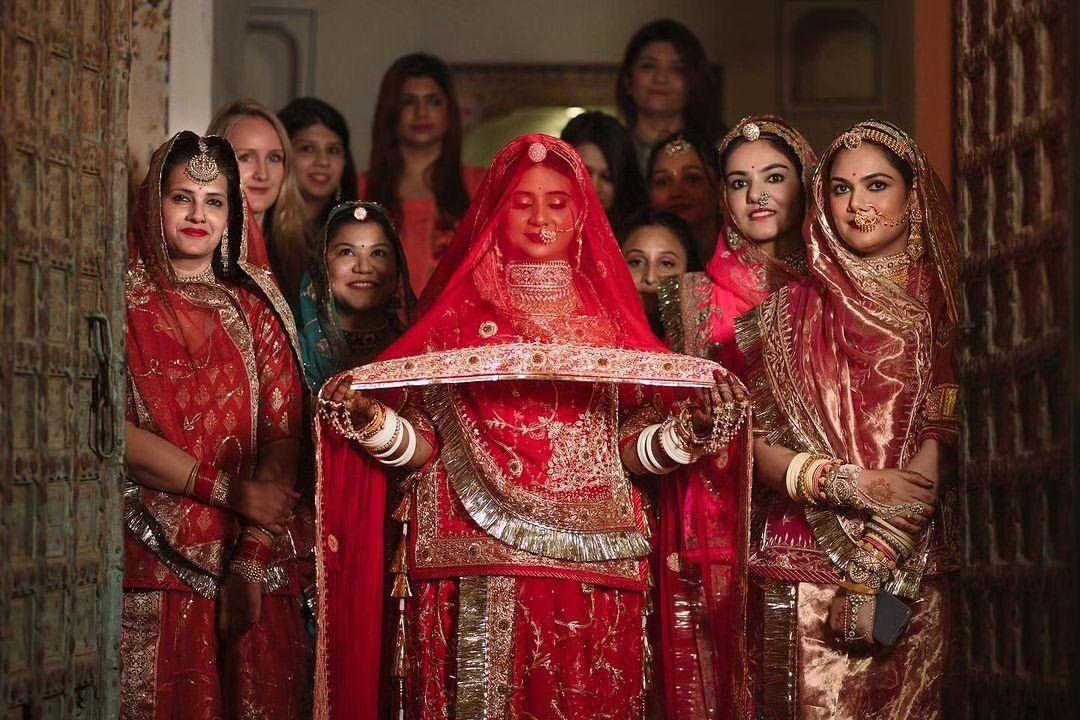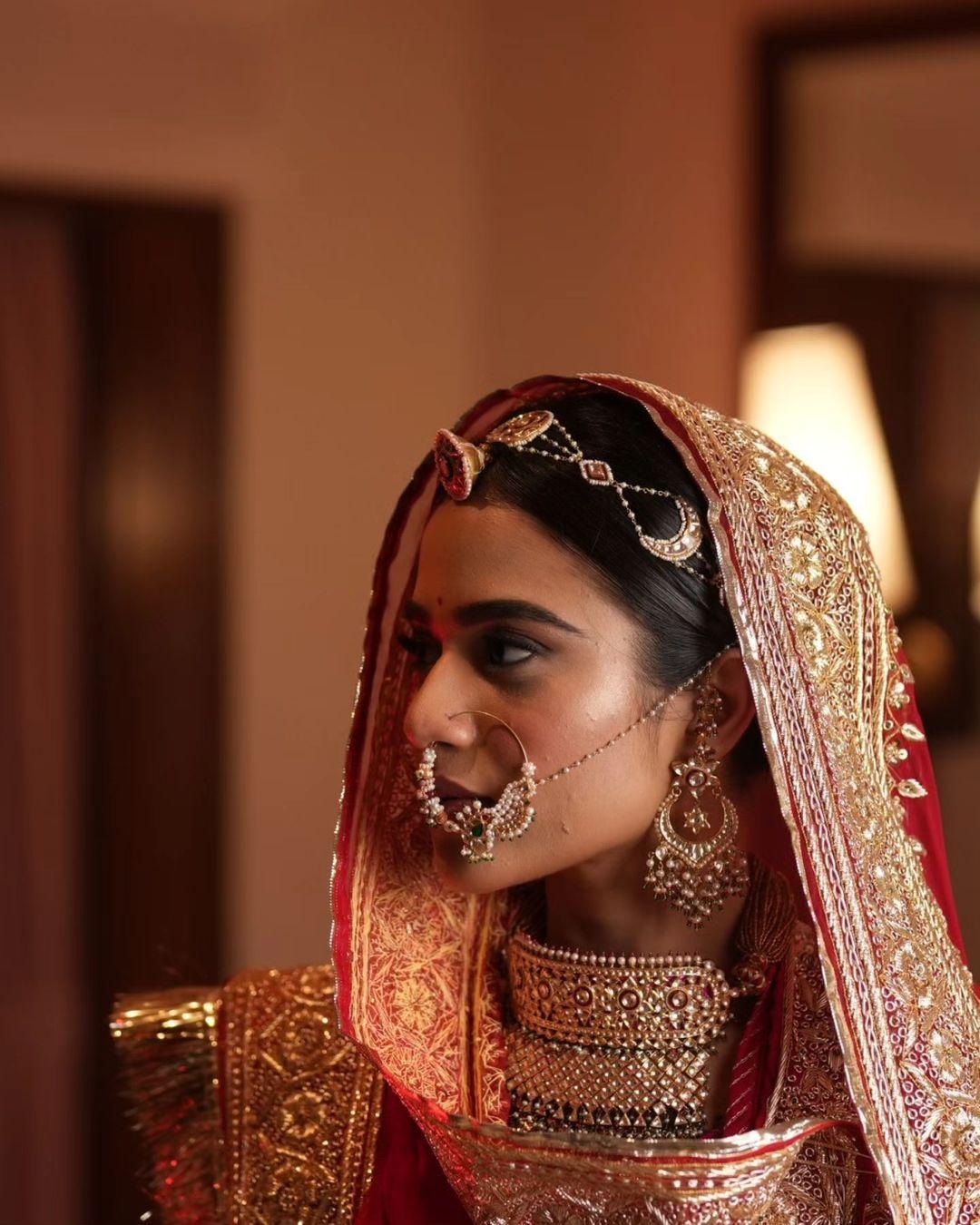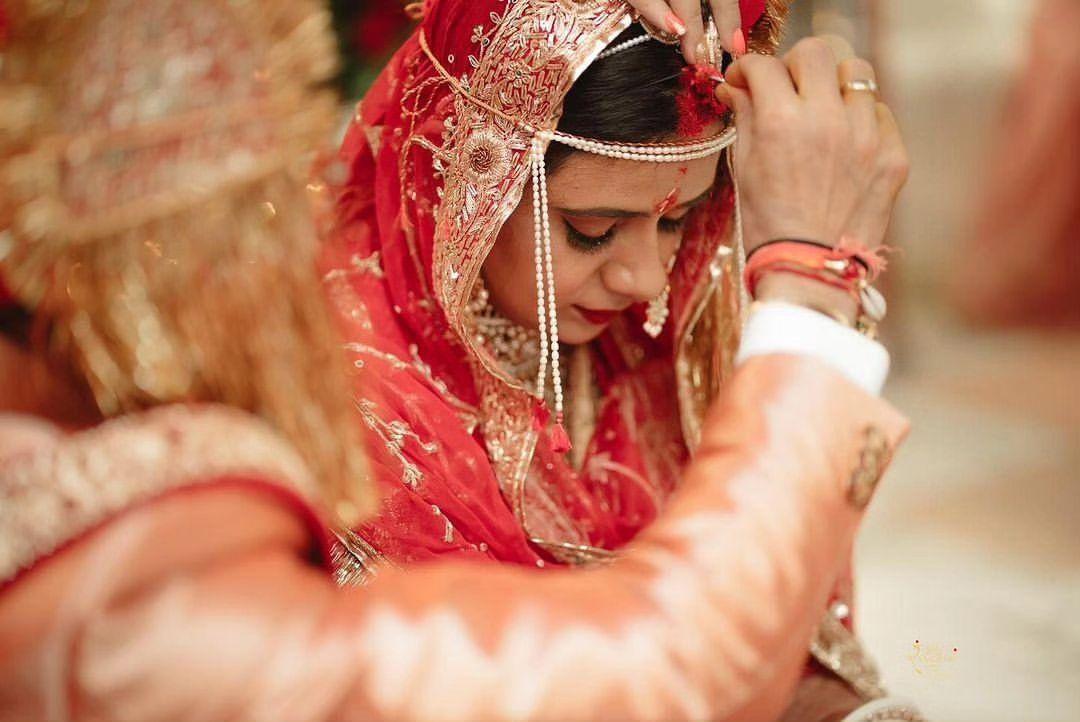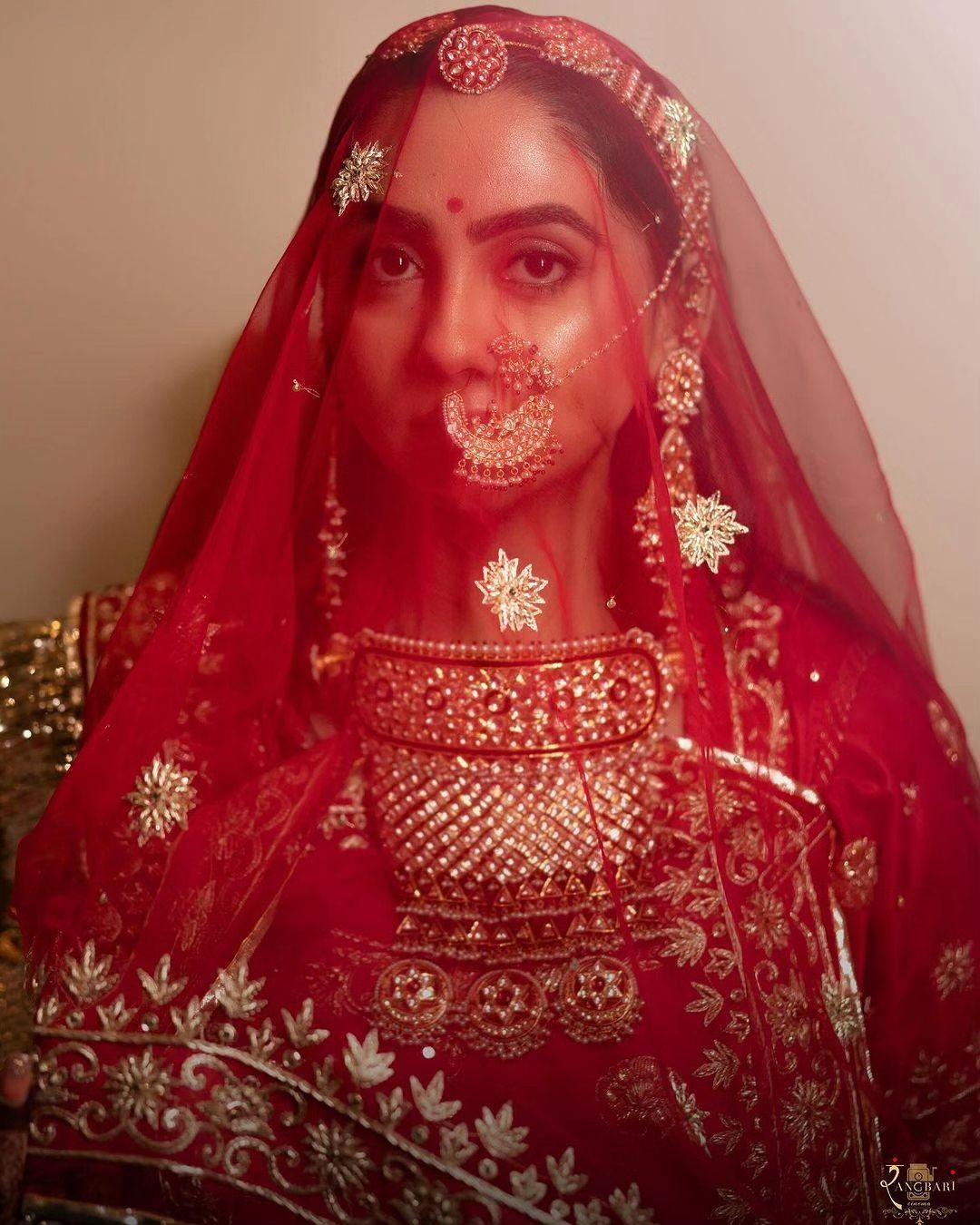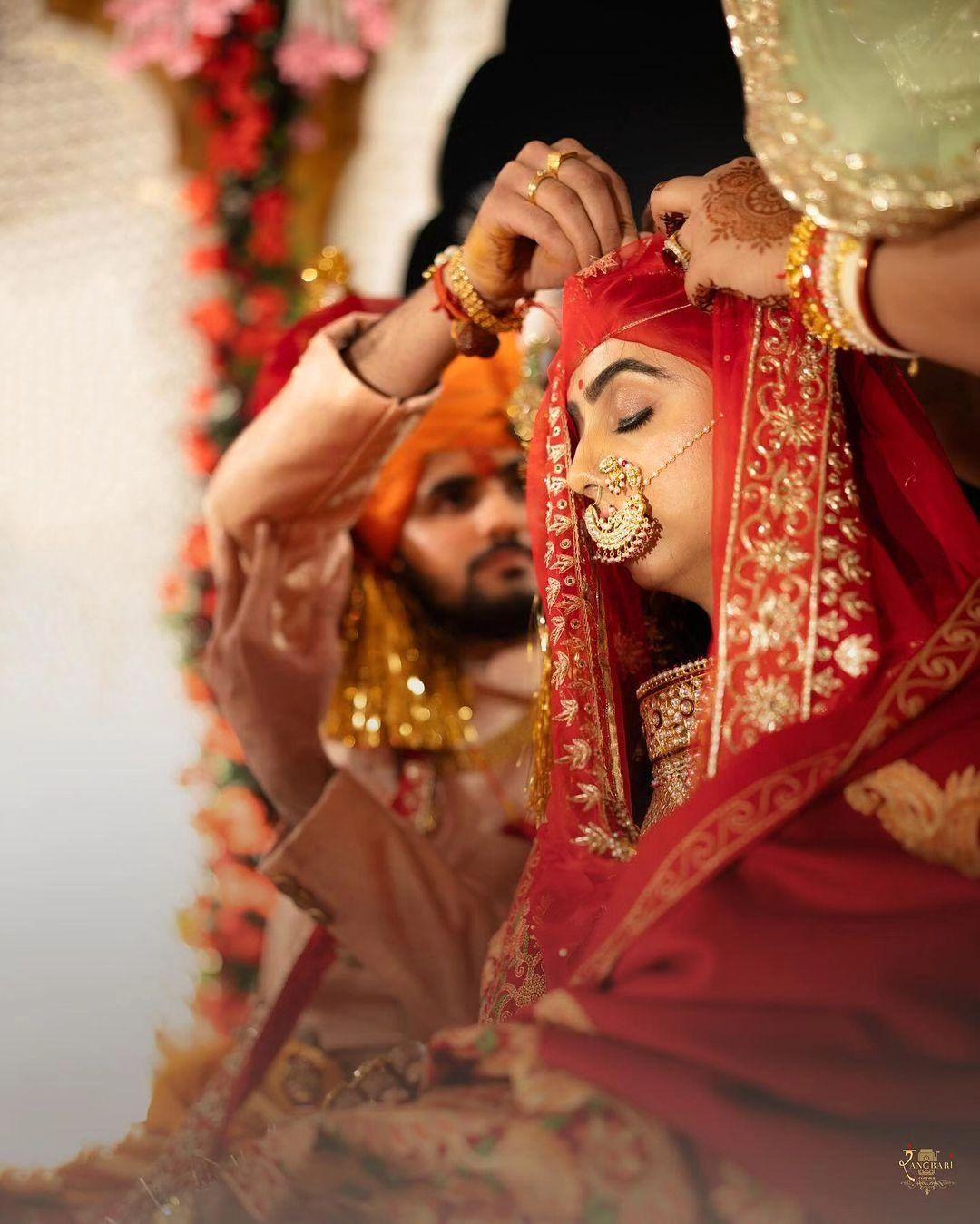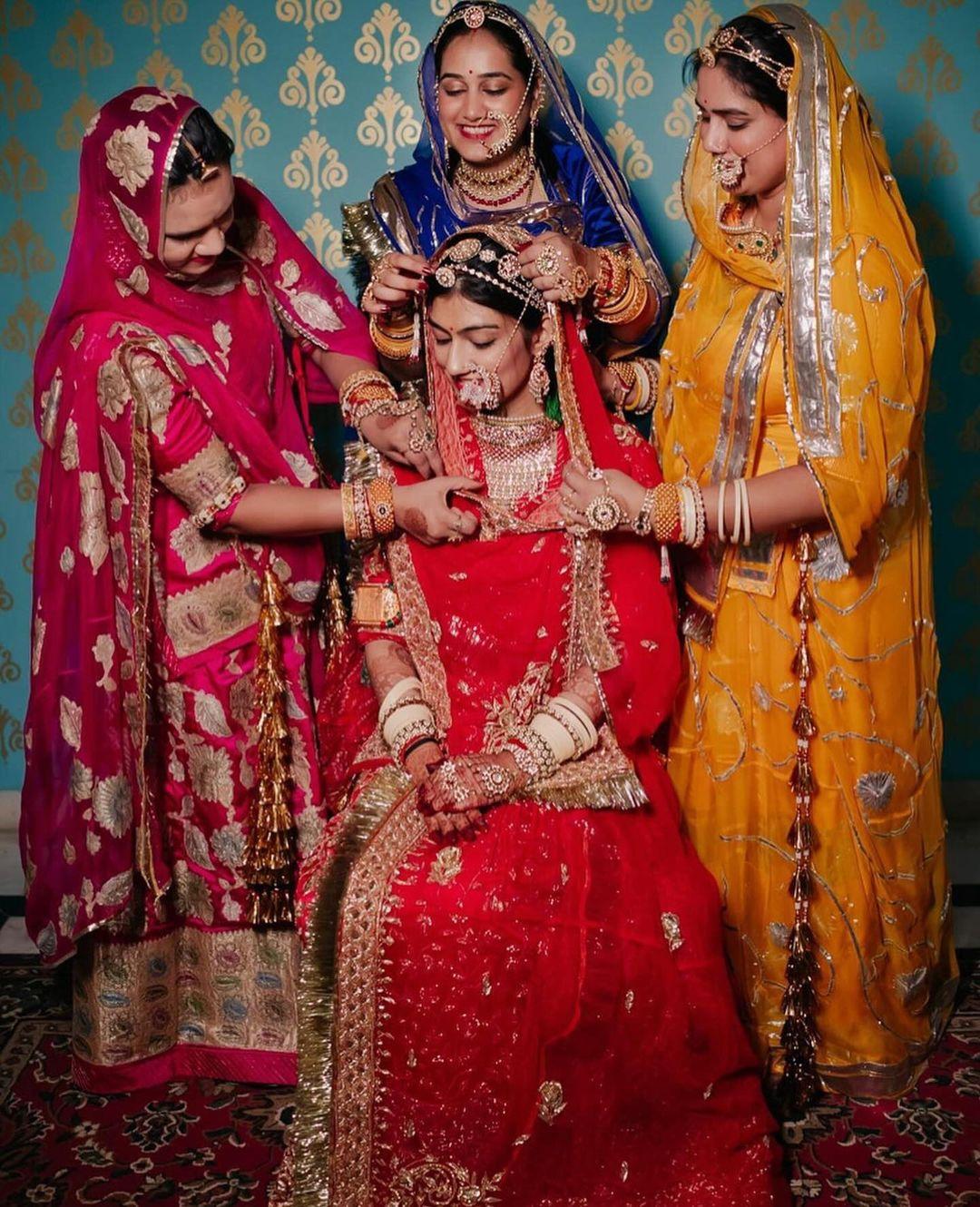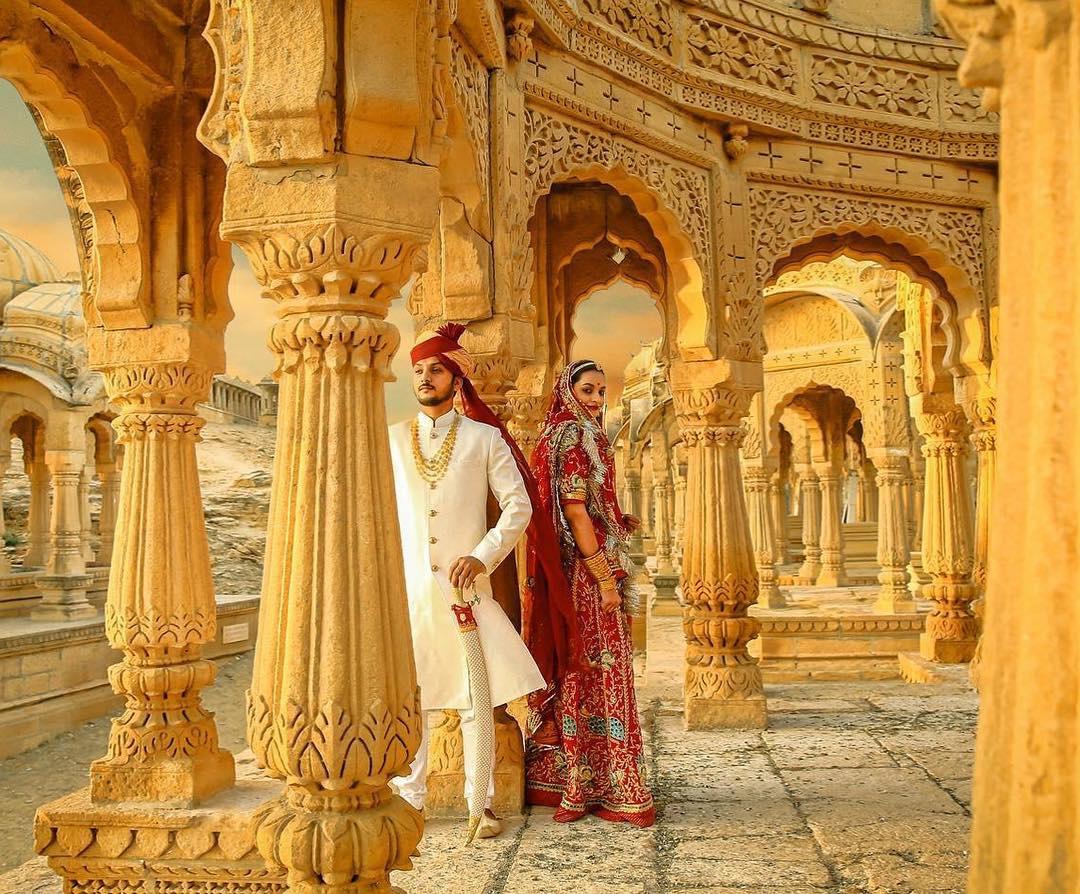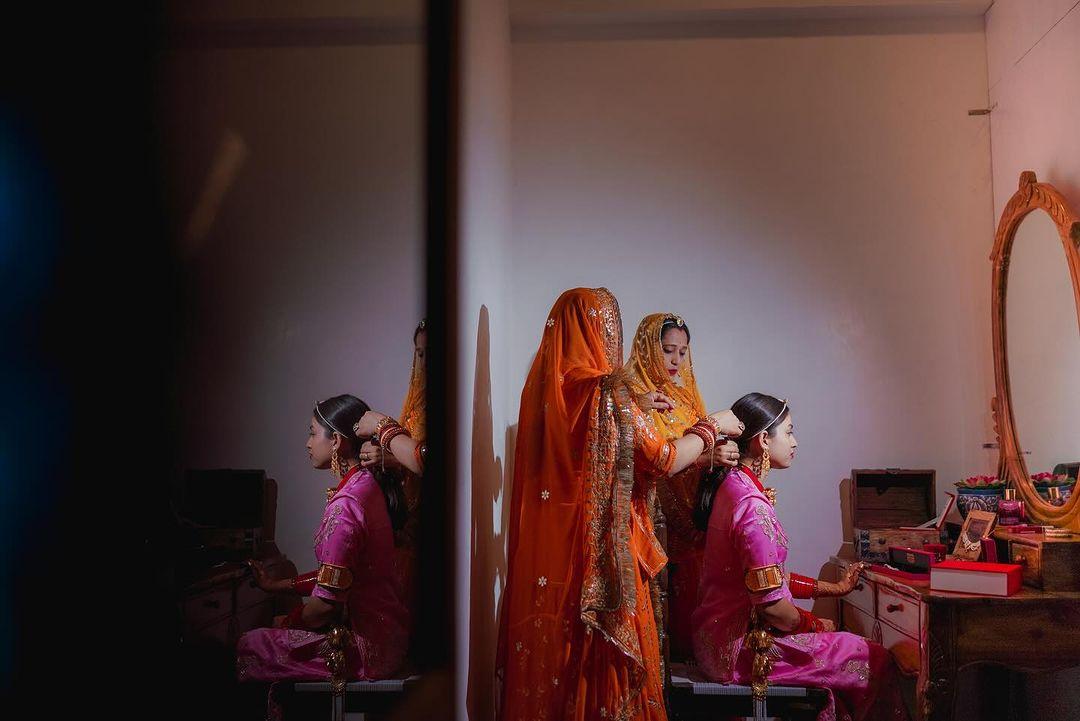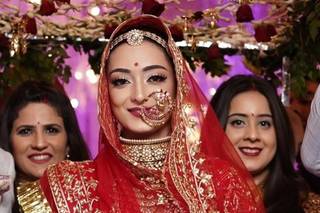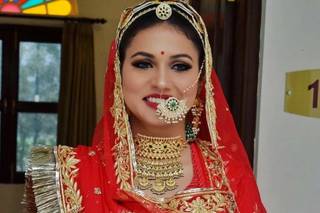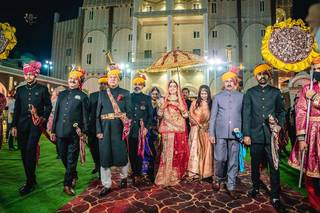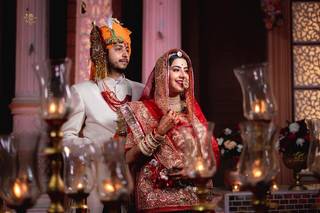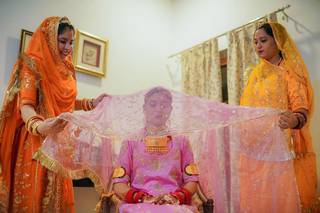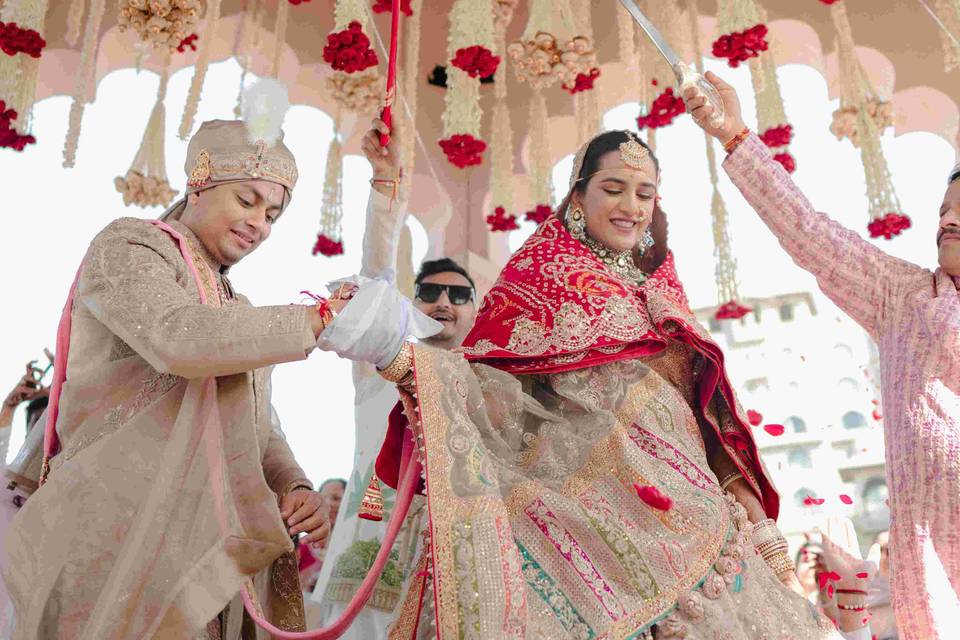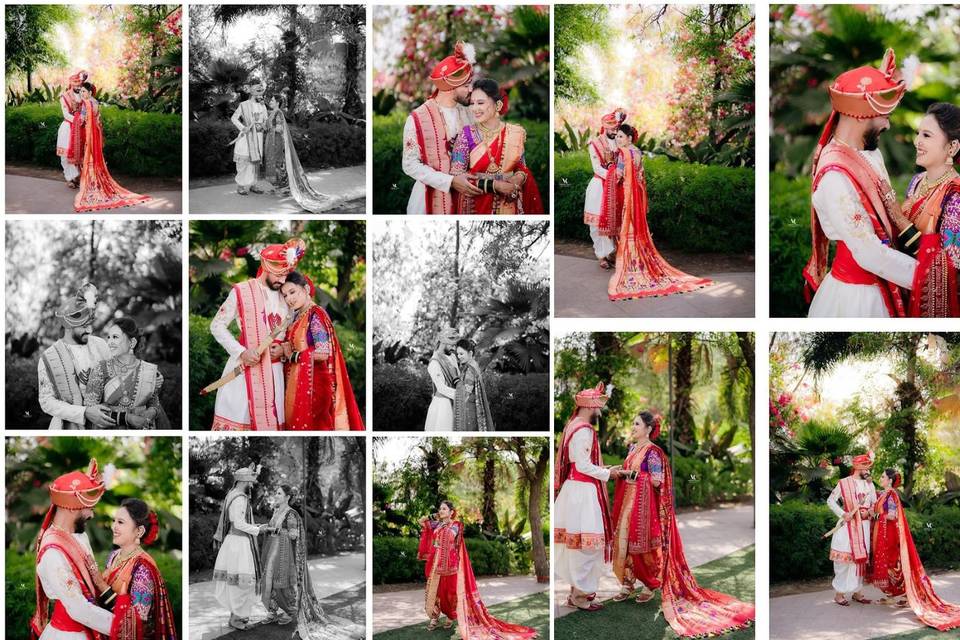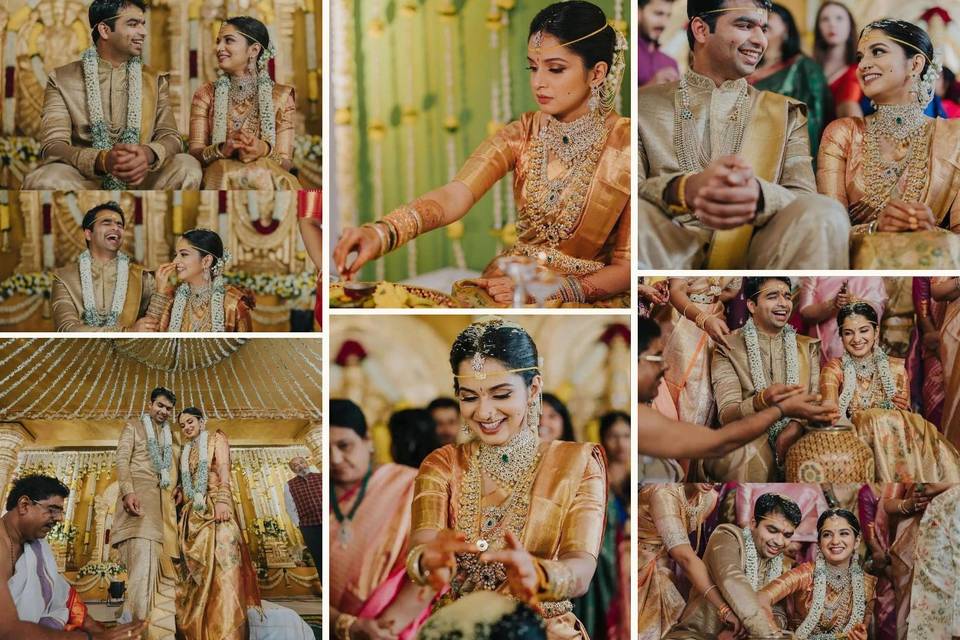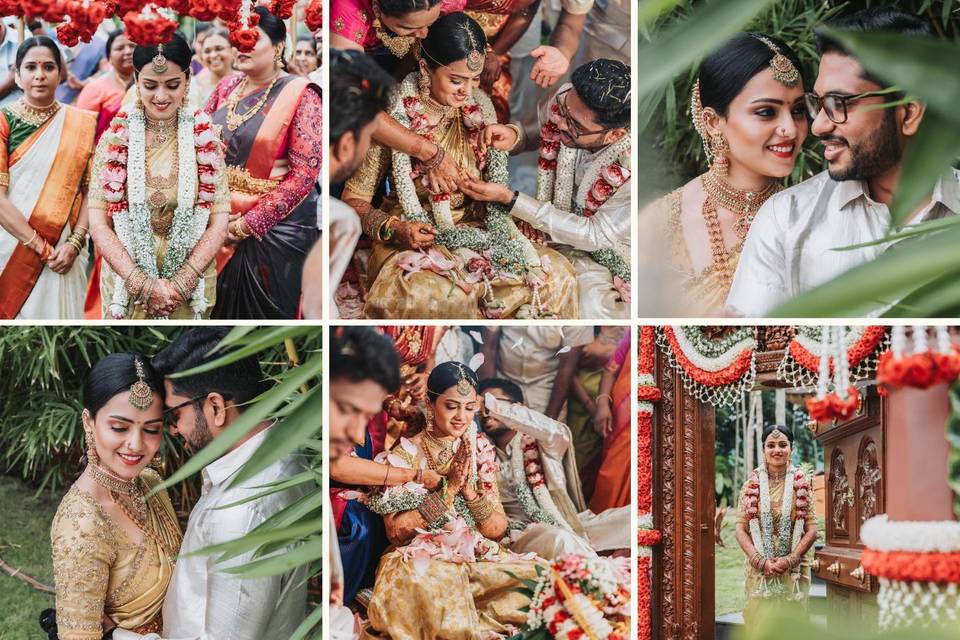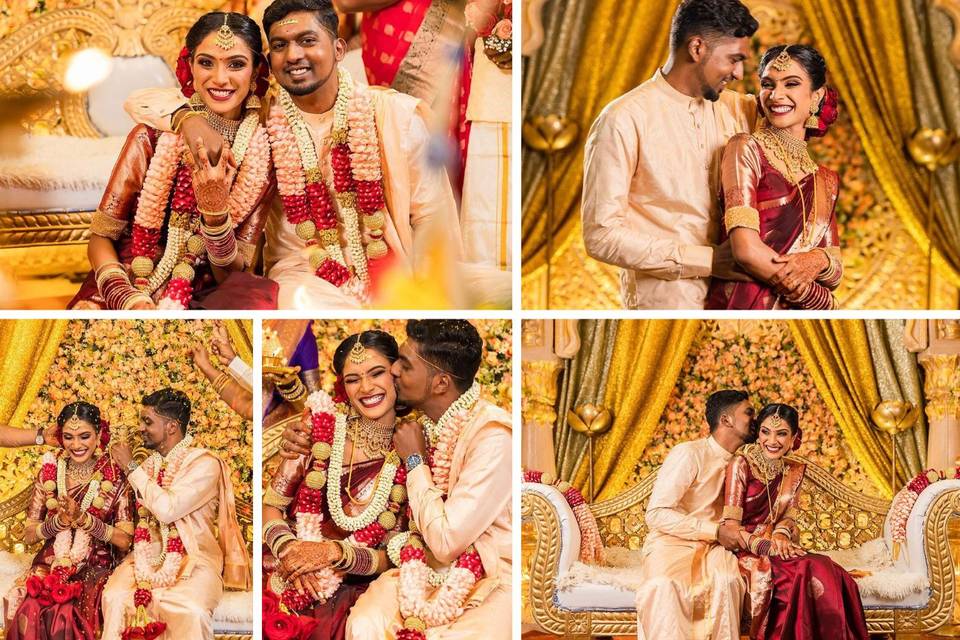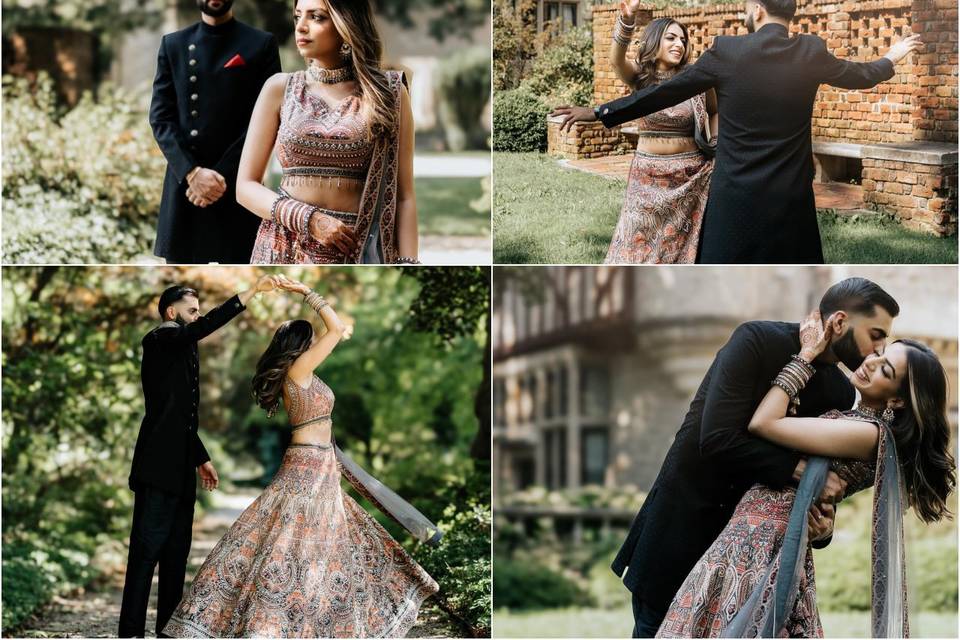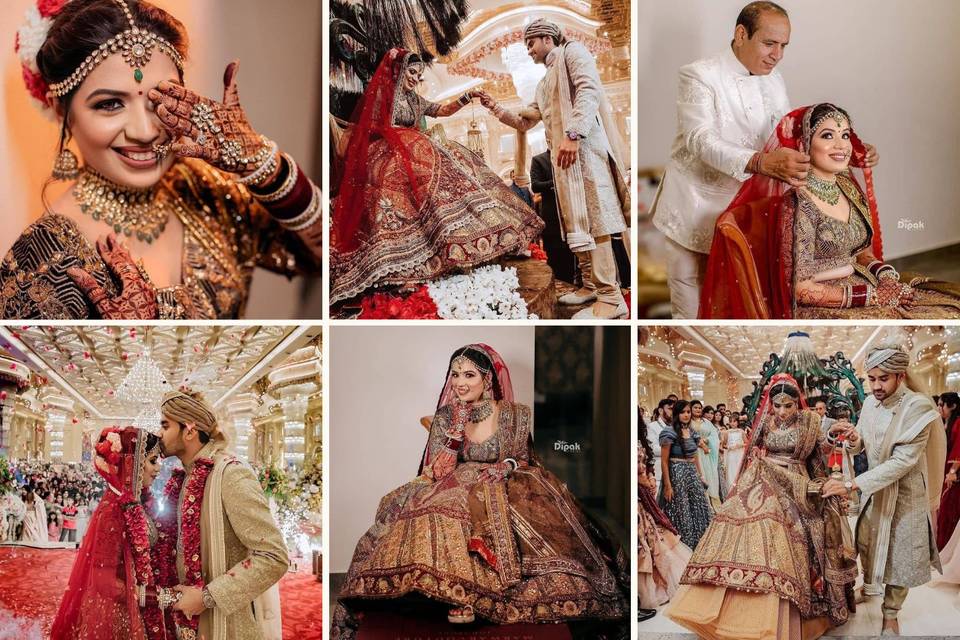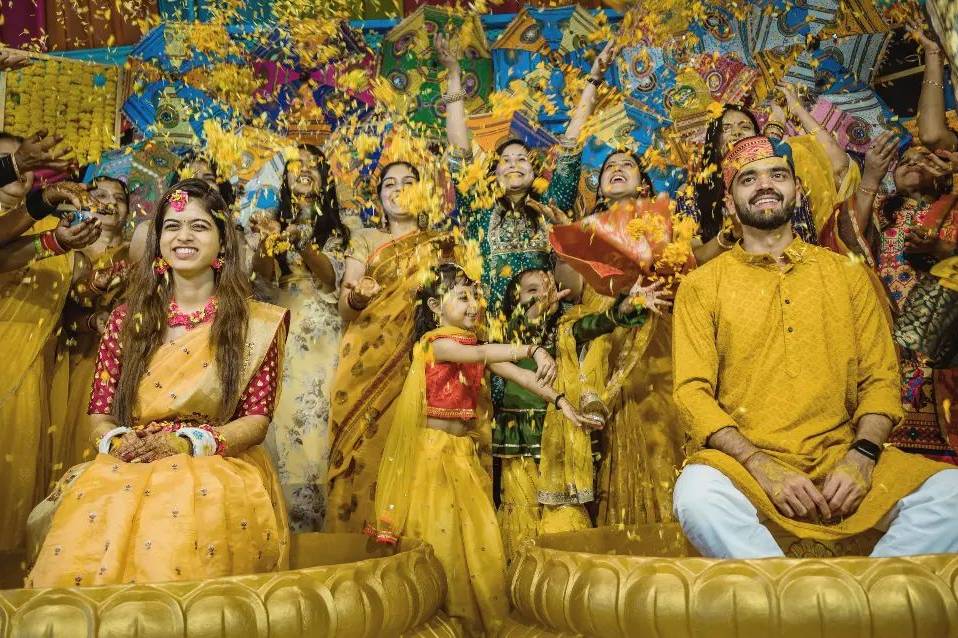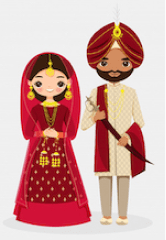Decoding Rajput Weddings: A Grand Celebration of Indian Heritage
From Tilak to Mahira Dastoor & the Mehfil, you know it’s a Rajput wedding when you see lights, colours and royalty. Here's decoding a Rajputana wedding for you.

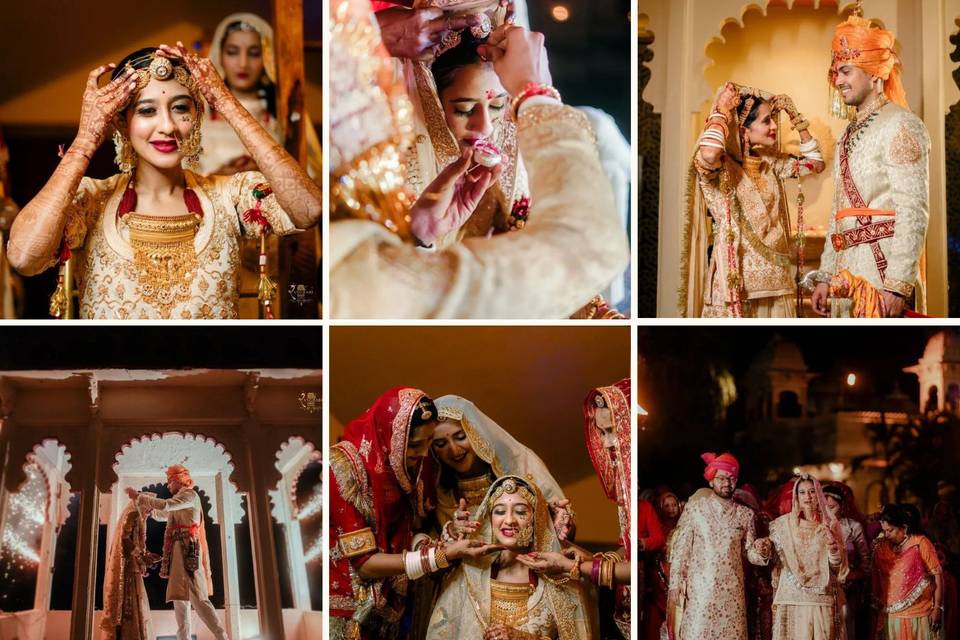
Image Courtesy: Rangbari Cinema
Contributing Writer: Queenie Singh
Being a country of 1.34 billion people, or more that is yet to be recorded, India is known for its vast religious and regional recognition. With more than nine recognised religions to date and uncountable diversities of cultures for each of these ethnic groups, the rituals of the most celebrated occasion of the world - the wedding, are a treat to be a part of or know of. Here's to celebrating the weddings of the 1.34 billion people in full enthusiasm for the festivities and soaking in the colours of the cultural beauty. Cheers to decoding Indian weddings!
Elephants and horses clad in embroidered silk fabrics, swords, gigantic drums, huge metal Shehnai...aren’t you getting the royal feels already? To begin with, the #DecodingIndianWeddings welcome an actual blue Rajput wedding that exhibits the rich ethnicity and flavours of Rajasthan. Rajputana is the land of courageous fighters and still holds strong traditions, especially at festivals and weddings.
In this article:
3. Post-wedding Rajput Rituals
Even today, when you see a Palla Dastoor or a Rajput Baraat at a Rajasthani wedding, you feel royal elegance oozing out. Let’s take you on a tour of a Rajputana wedding ceremony's beautiful customs and traditions.
Top Wedding Venues in Rajasthan
Rajput Pre-wedding Rituals

Sarva Sampurna with Chhattees Guna (Match the stars)
Even if it’s not a perfect “Chhatees Guna” match, this custom is followed for horoscope tallying or matchmaking. Both the families check for some royal lineage in the other party. That’s an important criterion for a Rajput wedding.
Tilak ceremony (Official Seal
The Tilak or the Roka ceremony marks the official commencement of a Rajput wedding. All the bride's male family members visit the groom’s house, and either the brother or the mamo'sa (maternal uncle of the bride) applies Tilak on the groom’s forehead. This ritual is followed by gifting clothes, fruits, sweets and so on to the groom. What is royal for the Rajputs? They also gift the groom with a sword!
Ganpati Sthhapana (Puja for peace)
A few days before a Rajput wedding, the Ganesha idol is installed in the individual homes of the bride and groom, and a Havan and a Griha Shanti puja are performed to seek pious blessings. The family then worships the deity and seeks His blessings for a hassle-free wedding.
Mel (The Commencement Feast)
Mel is a Rajput wedding ceremony where the groom and bride's families throw a grand feast for their guests. Once the wedding proceedings start, the Tilak ceremony and the Ganpati Sthhapana are over. The dinner is almost always accompanied by traditional dance performances or ceremonial songs and music and is considered the official announcement of the wedding.
Pithhi Dastoor (Music and Haldi fun)
A Pithhi Dastoor, also known as the Baan, is often called Tel Baan in Rajasthan. At a Rajput wedding, a Pithhi Dastoor is a fun combo of Haldi and Sangeet ceremonies in their respective homes. The bride and the groom have applied turmeric and sandalwood paste in their homes. There are Dholak and Nagara beats, lots of laughter and playfulness, and traditional Sangeet songs sung and danced to by the women of the families.
Chaak (The Earthen Pot ceremony)
Also known as Chaak Pujan among Rajputs, this ceremony during a wedding is similar to the Jaago ceremony of the Punjabi Wedding, where a kalash or earthen pots are carried by 5, 7 or 11 women of the groom's family to the potter's place while singing ceremonial songs. The pot represents the universe, and the Chaak symbolises the chakra of Lord Brahma, meaning creation and prosperity. This ceremony celebrates new beginnings, and a Tilak and rice are put on the Chaak to pray.
Mahira Dastoor (Enter Uncle)
Mahira Dastoor or Bhaat Dastoor is a pre-wedding ceremony in which the maternal uncle of the bride, or ‘Mama'sa’, generously contributes to his niece’s wedding. The maternal uncle of the bride and his family make a grand entrance to his sister’s house. He then gifts his sister and her whole family with clothes, sweets, and jewellery. This ceremony at a Rajput wedding signifies that the ‘Mama’ is ready to bear responsibility for his sister’s family's wedding and play a pivotal role.
Bindori/Bindora (Bachelorette/bachelor meals)
The respective Families, friends, and relatives of the groom-to-be and bride-to-be arrange separate dinners and luncheons and serve the bride and groom their favourite dishes before they get hitched. This custom is called a Bindora (for the groom) or Bindori (for the bride) at a Rajput wedding, and it is one royal party to look forward to.
Janev (Monkhood averted!)
At a Janev ceremony in Rajput weddings, the groom wears a saffron-coloured robe and performs a Havan with the family priest. This signifies his taking on responsibilities as a householder. Once the Havan is done, the fun part is the groom ‘pretending’ to run away to attain monkhood when his maternal uncle stops him and convinces him to get married. This transformation of the groom from a bachelor to a grihastha is celebrated with full enthusiasm.
Palla Dastoor (Gifts and more)
The groom’s family comes to the girl’s house with gifts, clothes, jewellery, sweets and all kinds of bridal trousseau items. A Palla or a Palla Dastoor usually takes place a day or two before the wedding.
Nikasi, Baraat, Dhukav (The grand procession & warm welcome)
A Rajput groom dons a Safa or a Pagdi before he leaves for the wedding Mandap with the baraati. His sister-in-law applies Kajal on him from her eyes to mark the Nazar Utarna to ward off the evil eye, and it is often seen among Indians on any auspicious occasion. The groom’s sister-in-law (brother's wife) or the sisters tie golden threads to the mare's reigns, and he visits a temple for blessings before the Nikaasi.
The Baraat at a Rajput wedding is a showcase of grandeur. The groom wears a gold Achkan, a sherwani Jodhpuri Juttis, a traditional orange turban, a Kamarbandh, a pearl necklace, a sword and rides an elephant or a horse. All the other men in the family wear turbans, sherwanis and Achkans, too. The grand entourage then proceeds towards the wedding venue, singing and dancing.
Finally, when the Baraat reaches the venue, the bride’s family members receive the Baraatis with a warm welcome. The groom hits a Toran (a particular decoration done at the entrance) with his sword, symbolising the warding off evil and accepting the welcome to his Sasural with God's grace. The bride’s mother then puts Tilak on the groom and performs Aarti.
Rajput Wedding Rituals
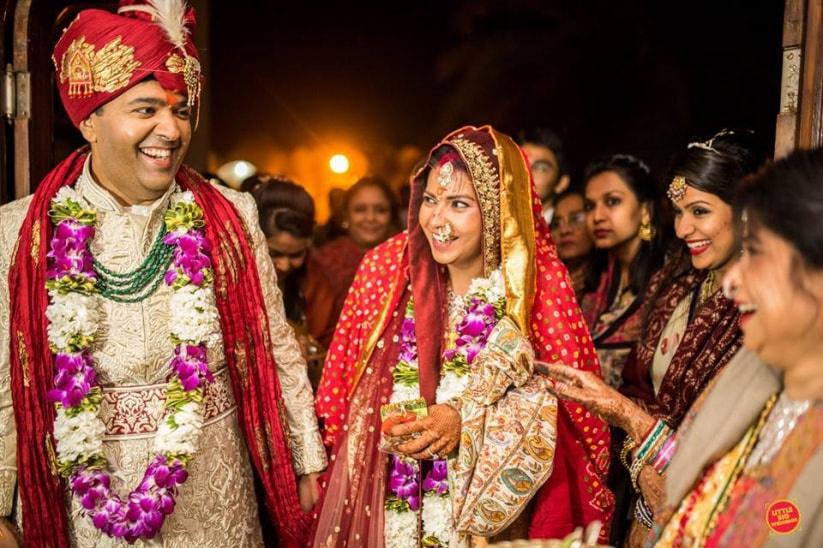
The bride and the groom sit by the holy fire while the priest chants Vedic mantras of matrimony. Throughout a Rajput wedding, the bride’s face is hidden behind a veil. While all the women attend the wedding rituals, the male members tend to the guests and take care of the hospitality. Here are the wedding rites and traditions:
Granthi Bandhan or Gathjoda (The holy knot)
Symbolising the eternal bond of two souls, the cloth around the groom’s waist is tied with the Chunari (dupatta) of the bride. This is usually done by either the priest or the groom’s sister.
Paanigrahan (Take my hand)
The groom takes the bride’s hand in his and promises to be together for eternity.
Sindoor (Vermillion)
The groom applies Sindoor on the bride’s forehead and centre hair parting. This is an auspicious custom in which the groom welcomes the bride into his life and completes the whole bridal look.
Pheras (The seven oaths)
The bride and groom circle the holy fire seven times (signifying seven lives), taking vows to be with each other in good and bad times. The priest chants mantras, which the couple then recites together.
Aanjhala/Chhol Bharai (Lap full of duties)
At the end of a Rajput wedding, a bag full of money is placed on the bride’s lap. This symbolises that the entire family’s financial responsibility is on her. She’s then asked to divide the money equally amongst her sisters-in-law and husband. The couple then touches the elders’ feet and takes their blessings.
Post-wedding Rajput Rituals
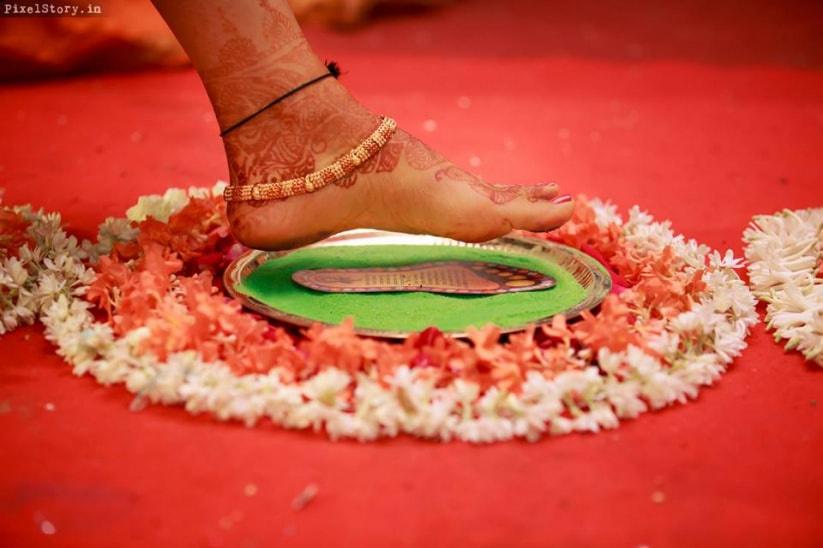
Grihapravesh (Welcome bride!)
The groom’s family welcomes the new bride into the family with Puja and rituals. The couple engages in fun games and ice-breaking traditions to ease the new member into the family and make her feel at home.
Pagelagni (Blessings and gifts)
On the following day of Grihapravesh, the bride is introduced to each family member and relative. The groom’s family individually blesses her with gifts.
Bidai (Adieu bride)
Bidai, or a farewell, is the official goodbye to the bride when she leaves her parental house. At a Rajput wedding, a coconut is placed under the car's wheels, which is to break when it moves. The groom has to give the bride a gift (usually a piece of jewellery) to unveil her face for the first time since the wedding.
Rajput Wedding Dress
For brides looking for beautiful yet traditional bridal lehenga choices for their royal wedding, we have shortlisted some of the most beautiful and unique Rajput wedding dresses you can choose for your big day. Read on to pick your favourite one!
Royal Red Rajput Wedding Dress

Designer: Mewar Couture
Royal red is an extravagant Rajput wedding attire embellished with intricate golden embroidery. The bold crimson colour perfectly represents love and wedding, while the gold embellishments provide an imperial effect. A bride-dress code that portrays grace and royalty can be accessorised with traditional gold ornaments and a traditional borla to achieve an admirable bride-dress code.
Minimal Rajput Wedding Dress
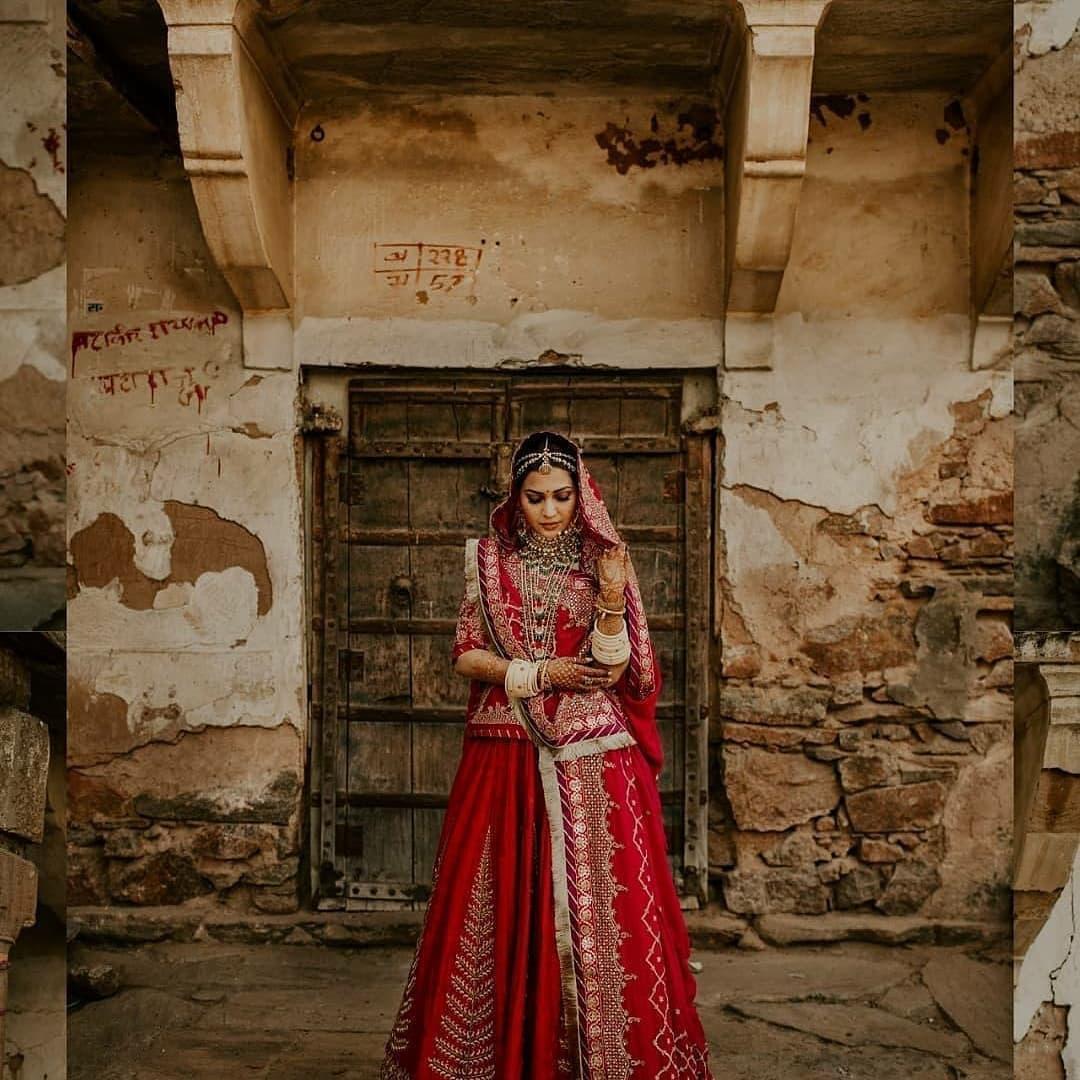
We have the perfect pick for you if you are looking for an understated, minimal elegance for your Rajput wedding dress. This gorgeous look will be perfect for your big day when styled with traditional Rajasthani jewellery or chunky statement pieces.
Rani Pink Rajput Wedding Dress Lehenga

Designer: Mewar Couture
The rani pink Rajput wedding dress with multicolour patchwork offers a mix of modern charm and traditional craftsmanship. This beautiful choice celebrates colour, texture, and traditional artistry, making it perfect for brides who want to stand out. To elevate the festive look, accessorise it with Jadau jewellery and a statement Matha Patti.
Traditional Rajput Wedding Dress

Designer: Radhika Boutique
This beautiful, elegant Rajputi wedding dress, with its gorgeous red and green contrast, represents heritage and culture. The understated embellishment adds a touch of beauty, making it a timeless choice for brides seeking tradition with a twist. Pair it with classic and traditional gold jewellery and a beautiful dupatta for a complete royal look.
Royal Blue Rajput Wedding Dress

Designer: Mewar Couture
A radiant cobalt Rajput wedding lehenga with gold embroidery is perfect for brides who want to break away from the usual wedding colour palette. This bold yet refined combination of this outfit is both eye-catching and elegant. Style it with light gold bangles, a statement necklace, and a classic bun adorned with fresh flowers for a stunning bridal look.
Classic Lehenga Rajput Wedding Dress
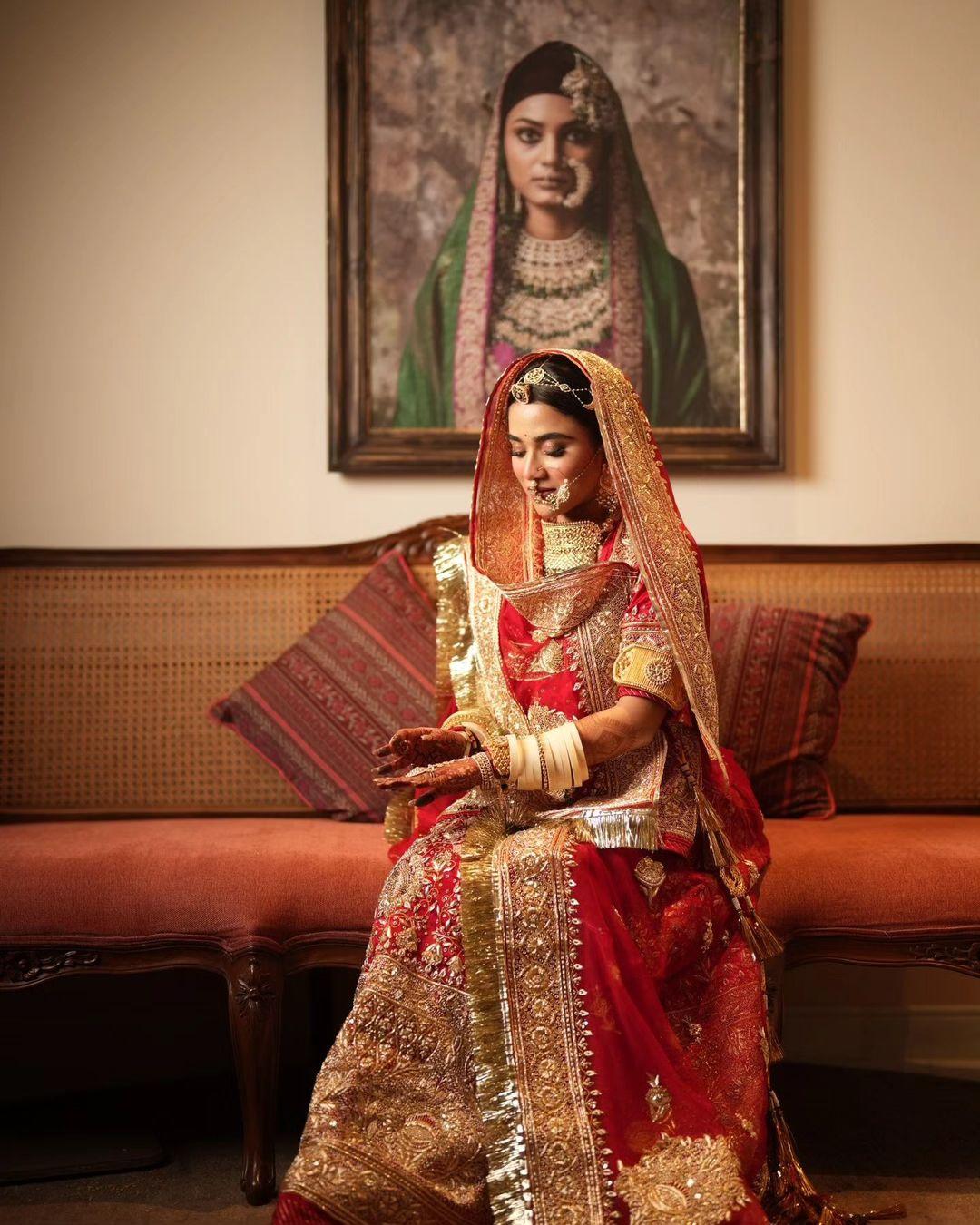
Designer: Rivaj Of Rajputana
A classic red Rajput wedding dress with gold embroidery and Kiran on the borders exudes regal charm and timeless grace. The traditional red symbolises love and strength, while the shimmering gold embellishments add a royal touch. Brides can enhance the look with a conventional matha patti, heavy jhumkas, and a richly embroidered dupatta to create a bridal look that’s both regal and deeply rooted in traditions.
Sunshine Yellow Rajput Wedding Dress

Image Courtesy: Youngest Banna Baisa
Perfect for your Haldi ceremony, this Rajput wedding dress will make you look nothing less than a gorgeous sunflower. It will be perfect for brides looking for a bold wedding outfit, radiating joy and positivity to each one of your wedding festivities.
A Rajput wedding is an exhibit of grandeur. A Mehfil is organised separately for the men and women, and it is a celebratory evening full of music and dance performances. A wide spread of Rajputi cuisine is served with lip-smacking delicacies, including Daal Bati Choorma, Laal Maas, and a diverse range of vegetables, sweets, curries, pickles and chutneys. A Rajput bride dresses up like a queen in gold and diamond bridal adornments, including chokers, dangling earrings, huge Matha Patti, Chura and anklets. A groom sports a sherwani/Achkan, majestic Serpech (turban), Juttis, sword and special jewellery. Everything about a Rajputana wedding screams magnificence. After all, Rajputs are all about their “Aan, Baan aur Shaan”!
Are you wondering what to wear for your Rajput wedding? Look at popular wedding vendors that have ravishing lehenga collections.
Decoding Indian Weddings with WeddingWire India:
1. Decoding Manipuri Wedding Rituals
2. Decoding a Hindu Punjabi Wedding

